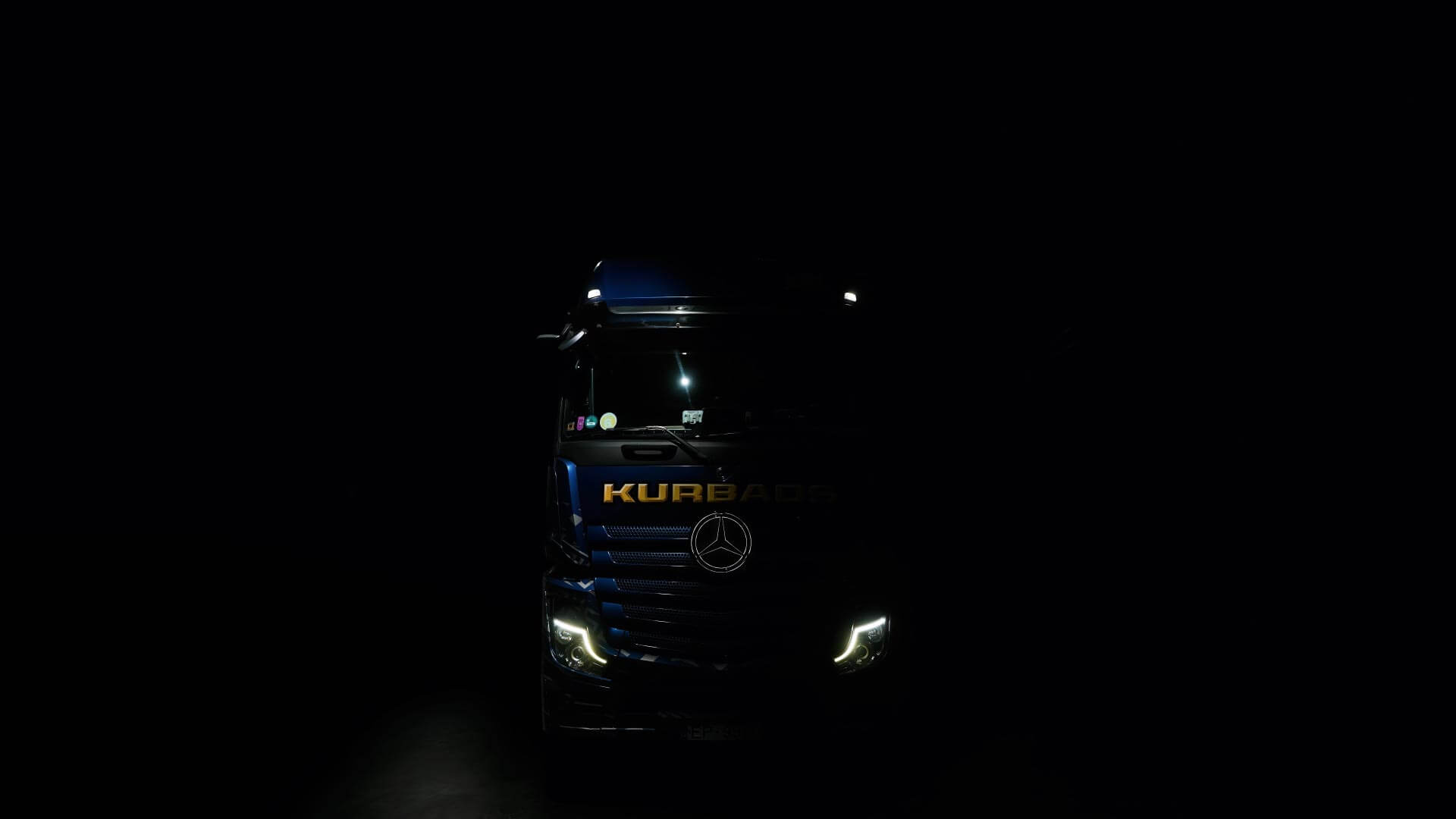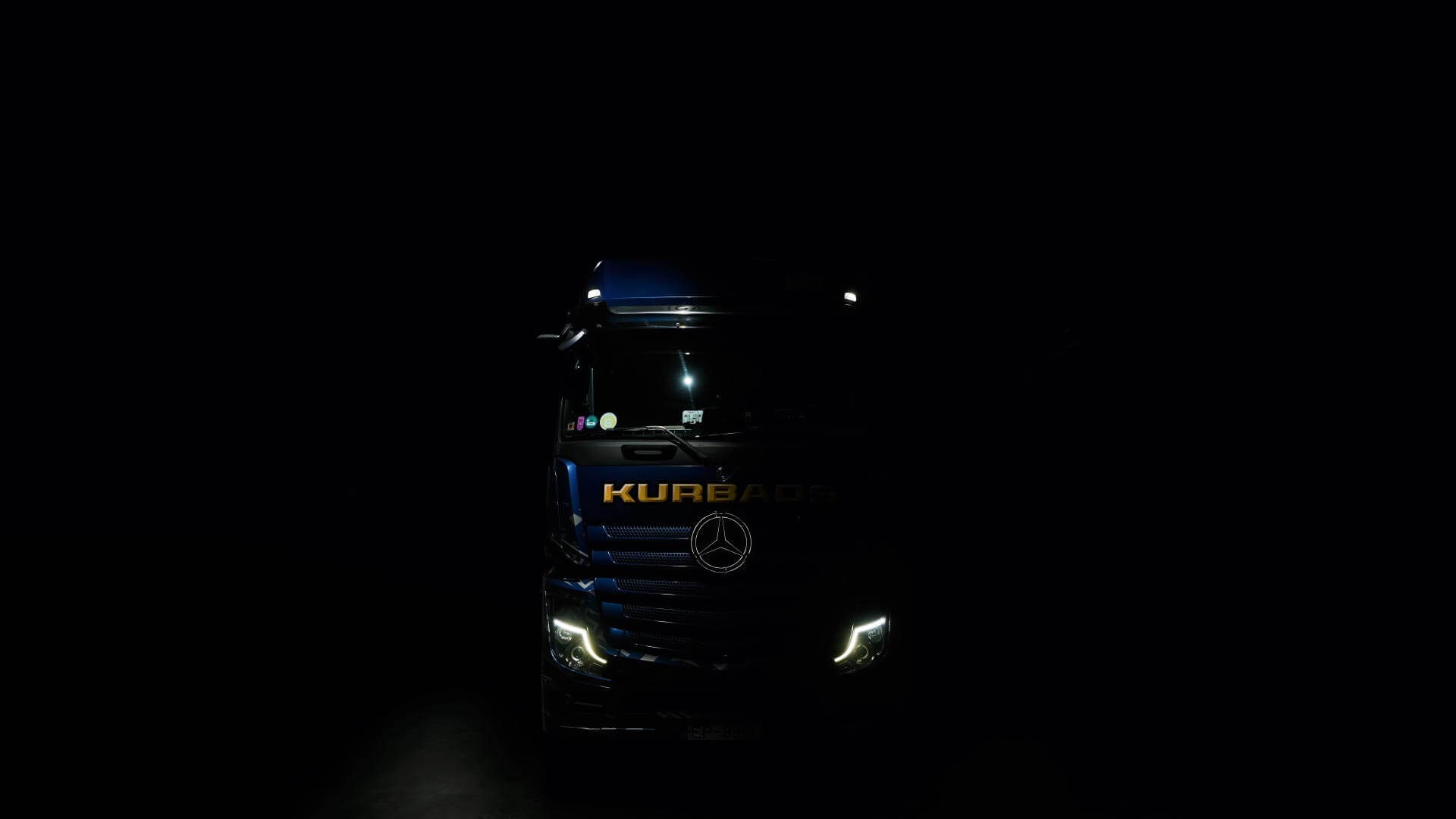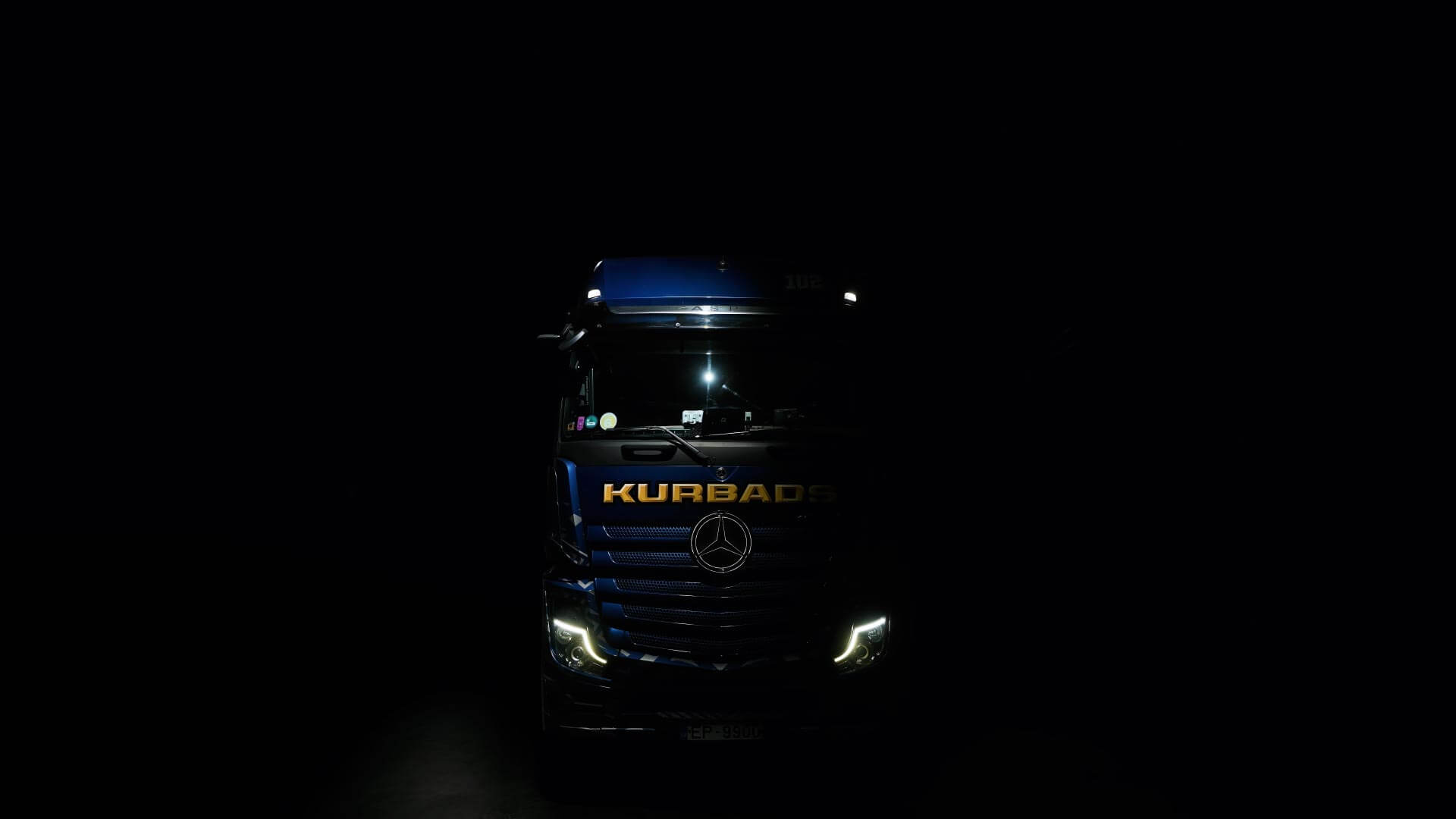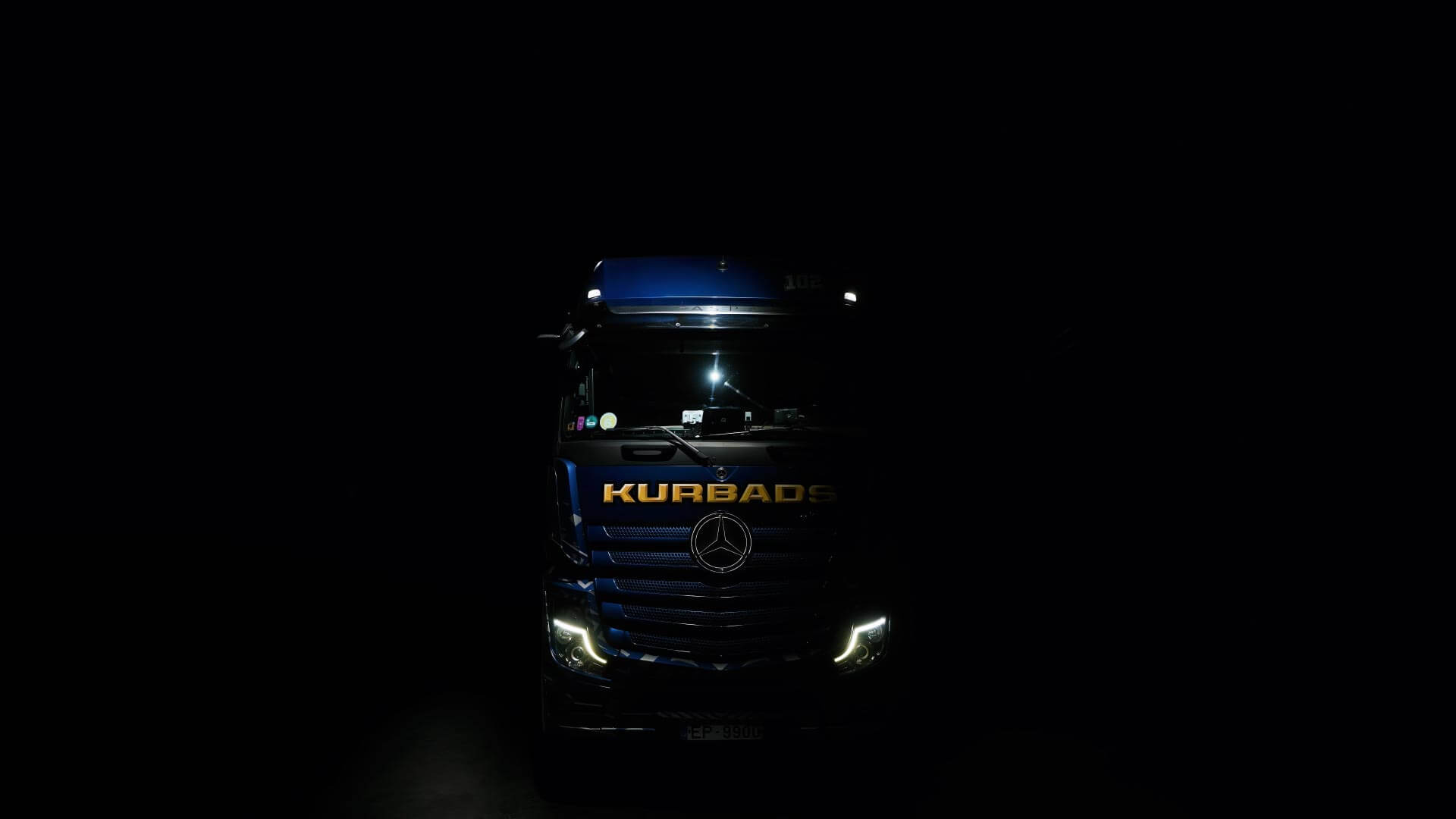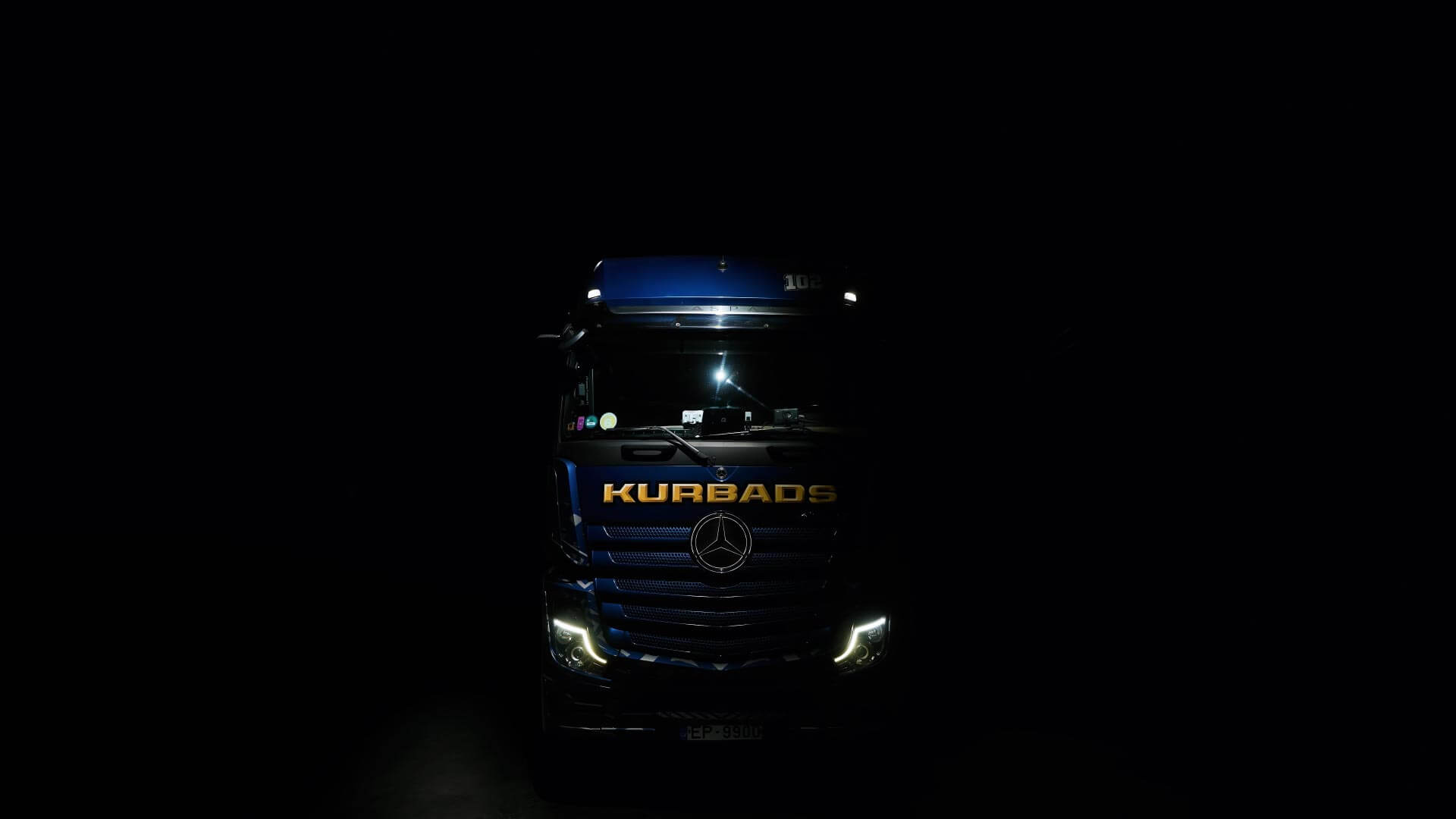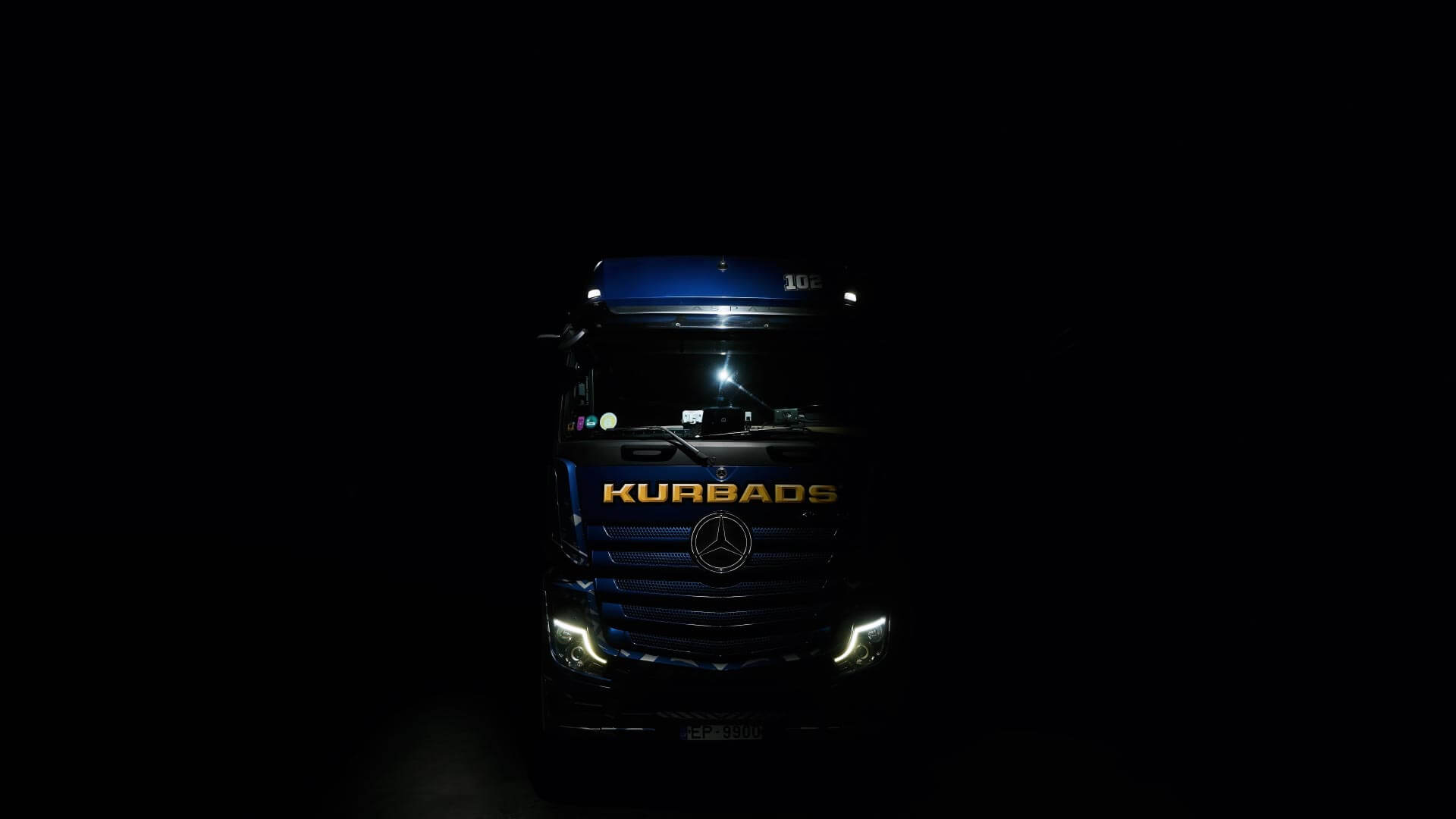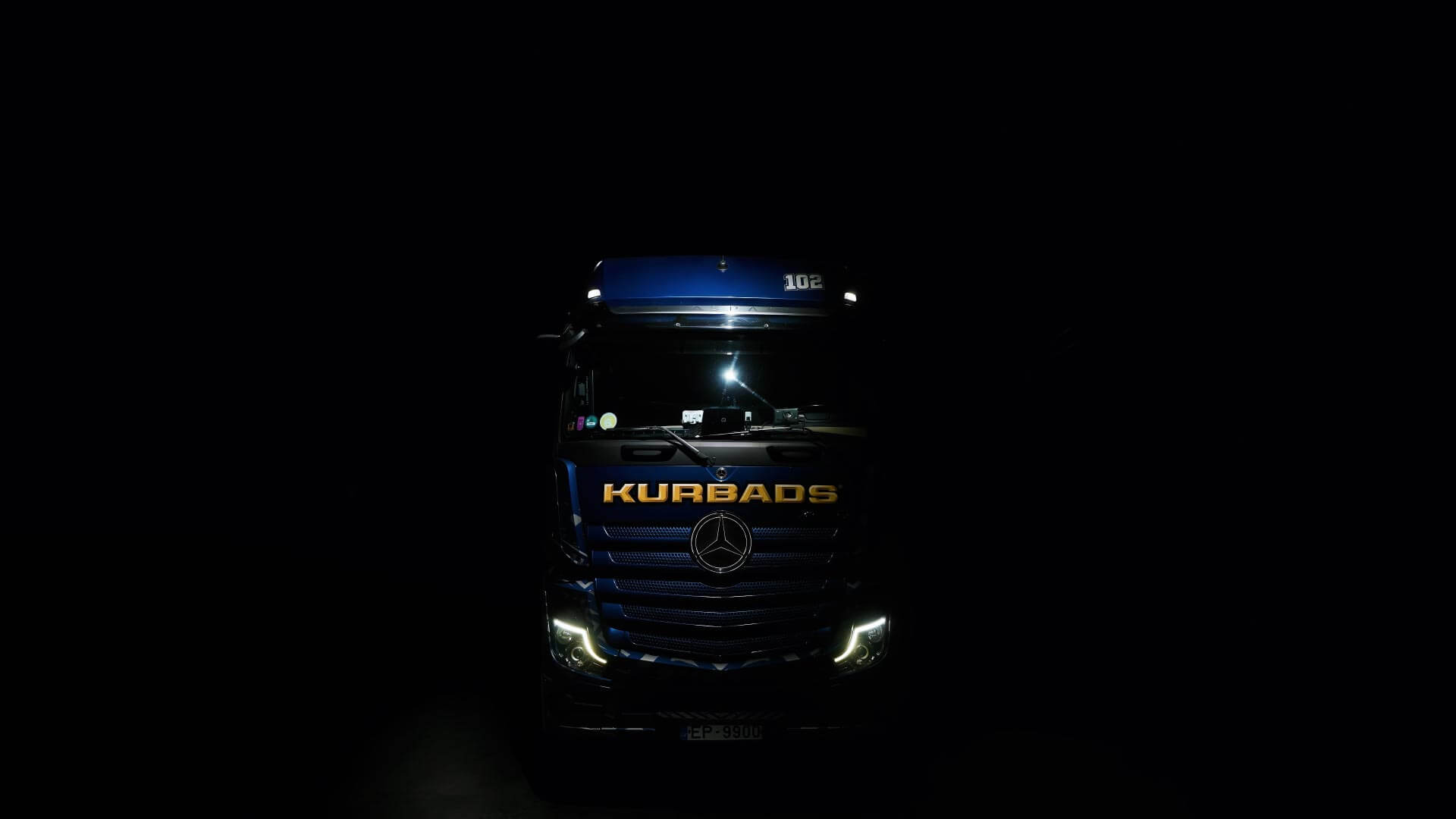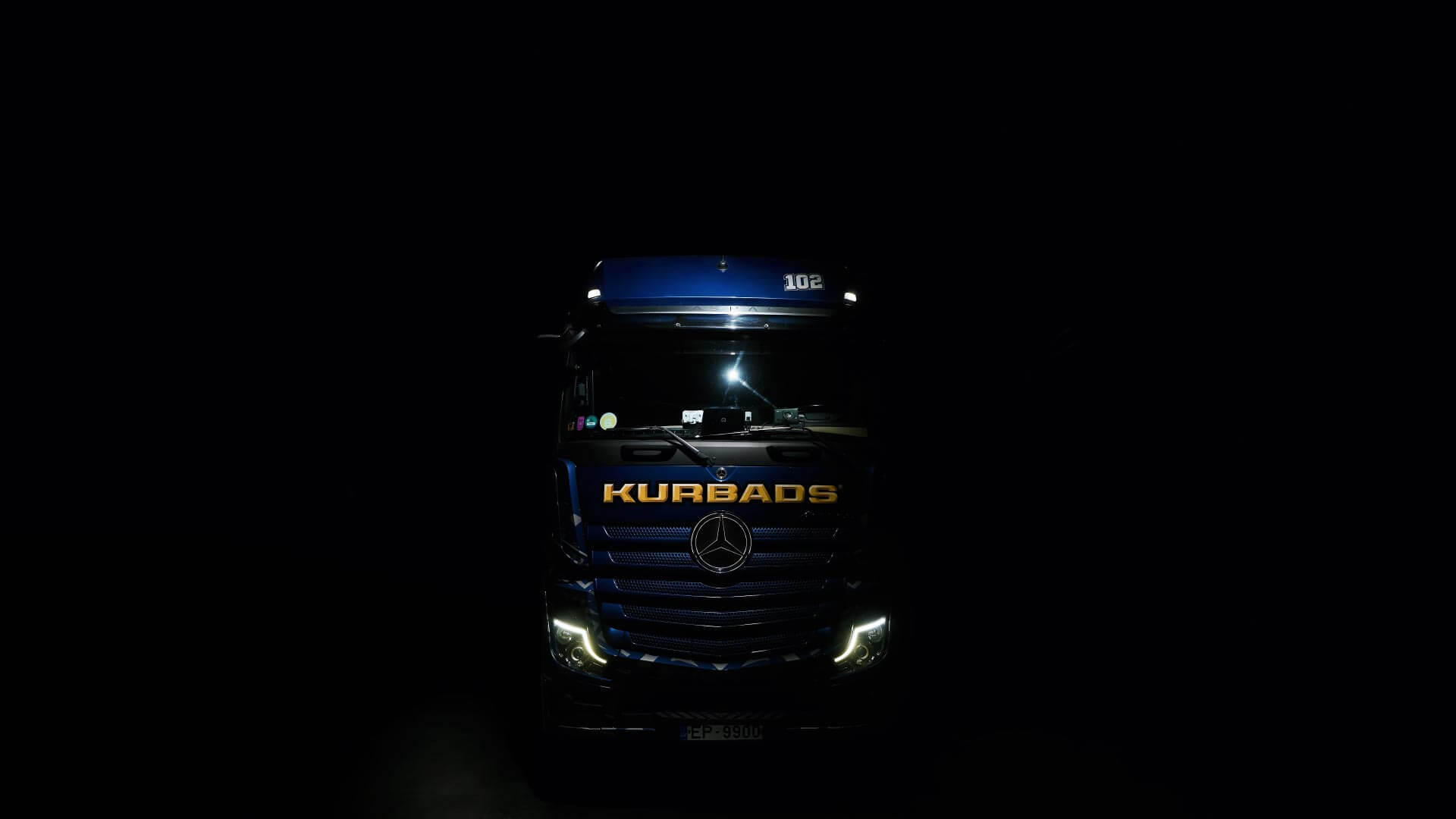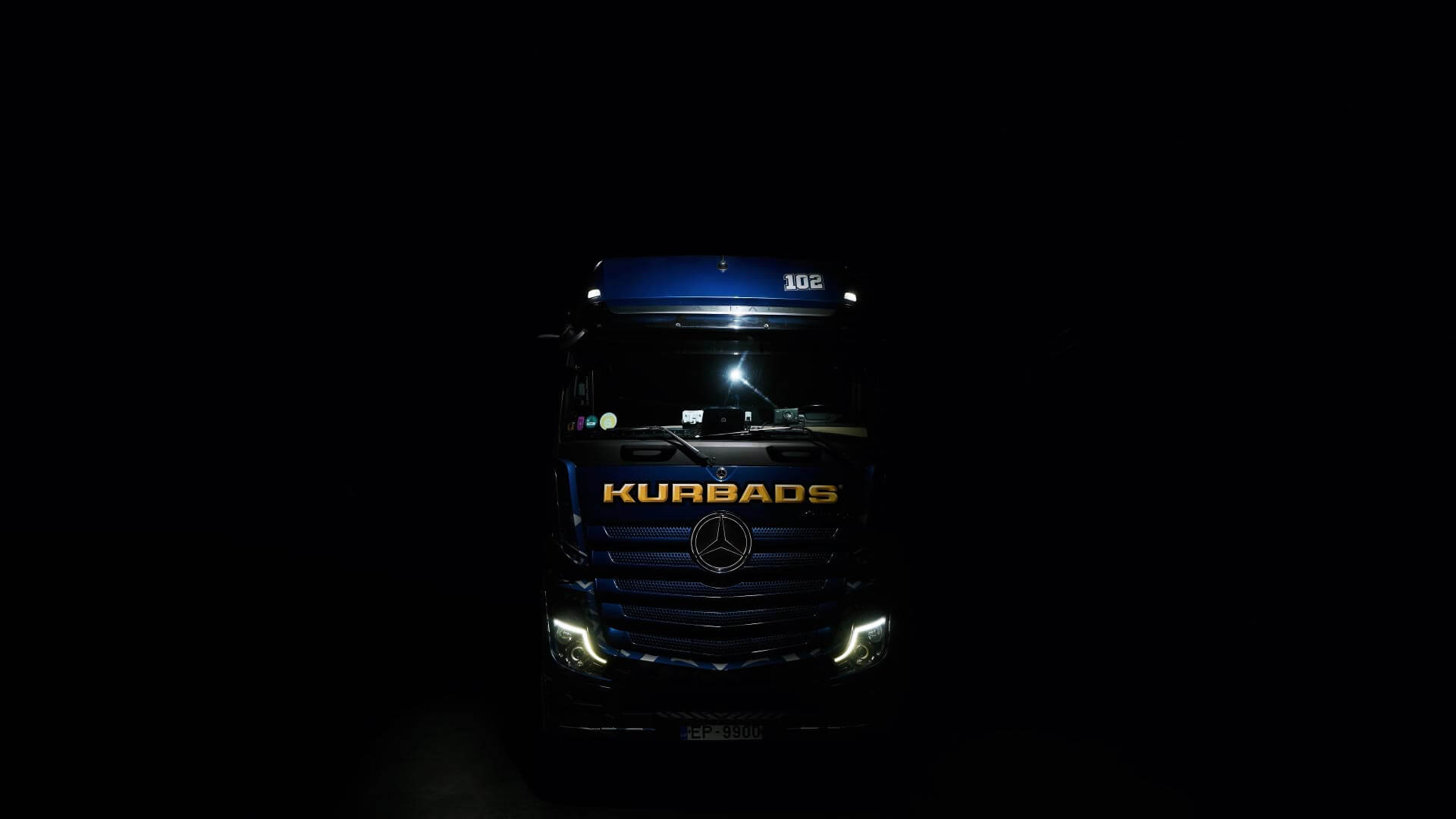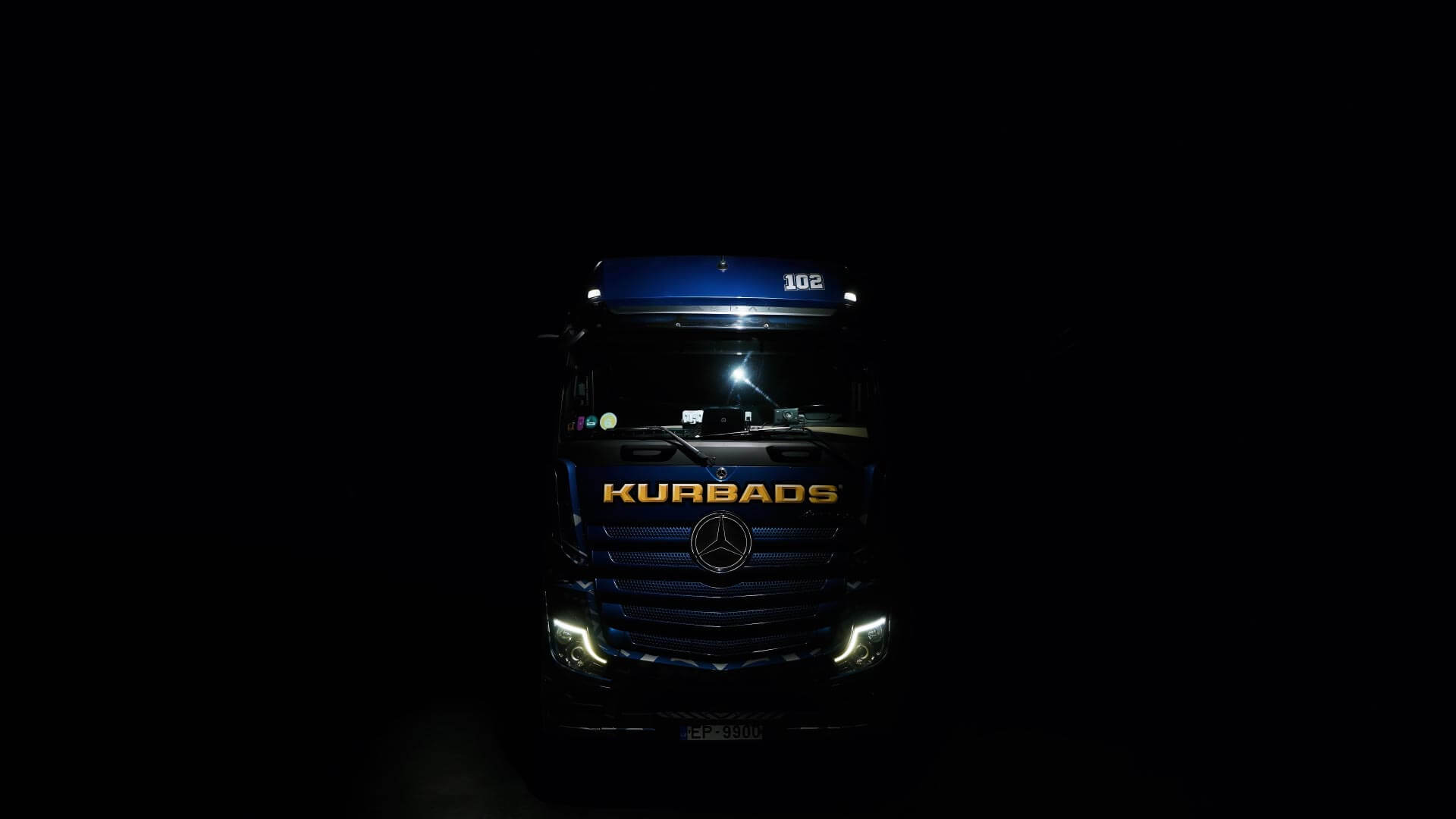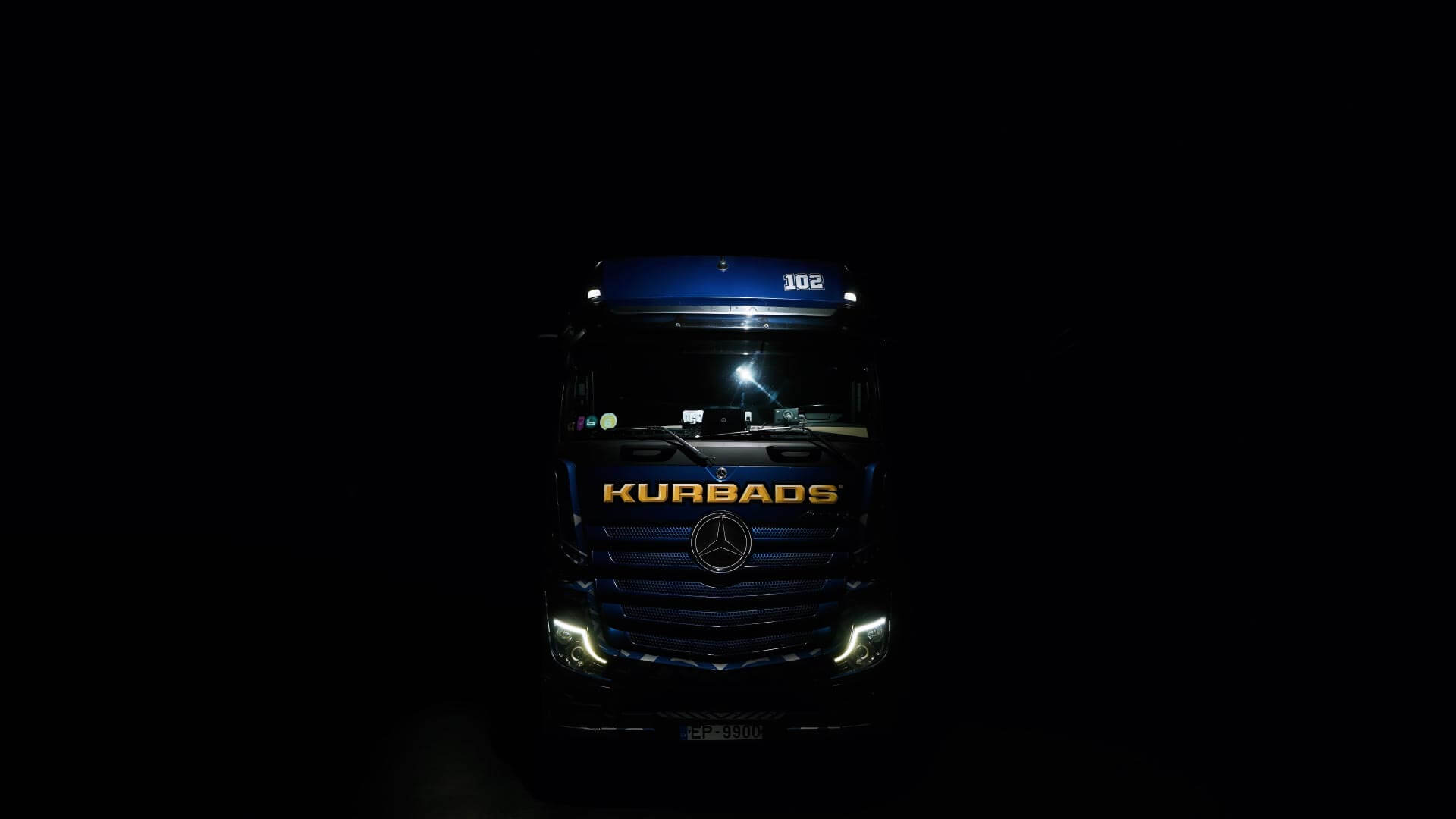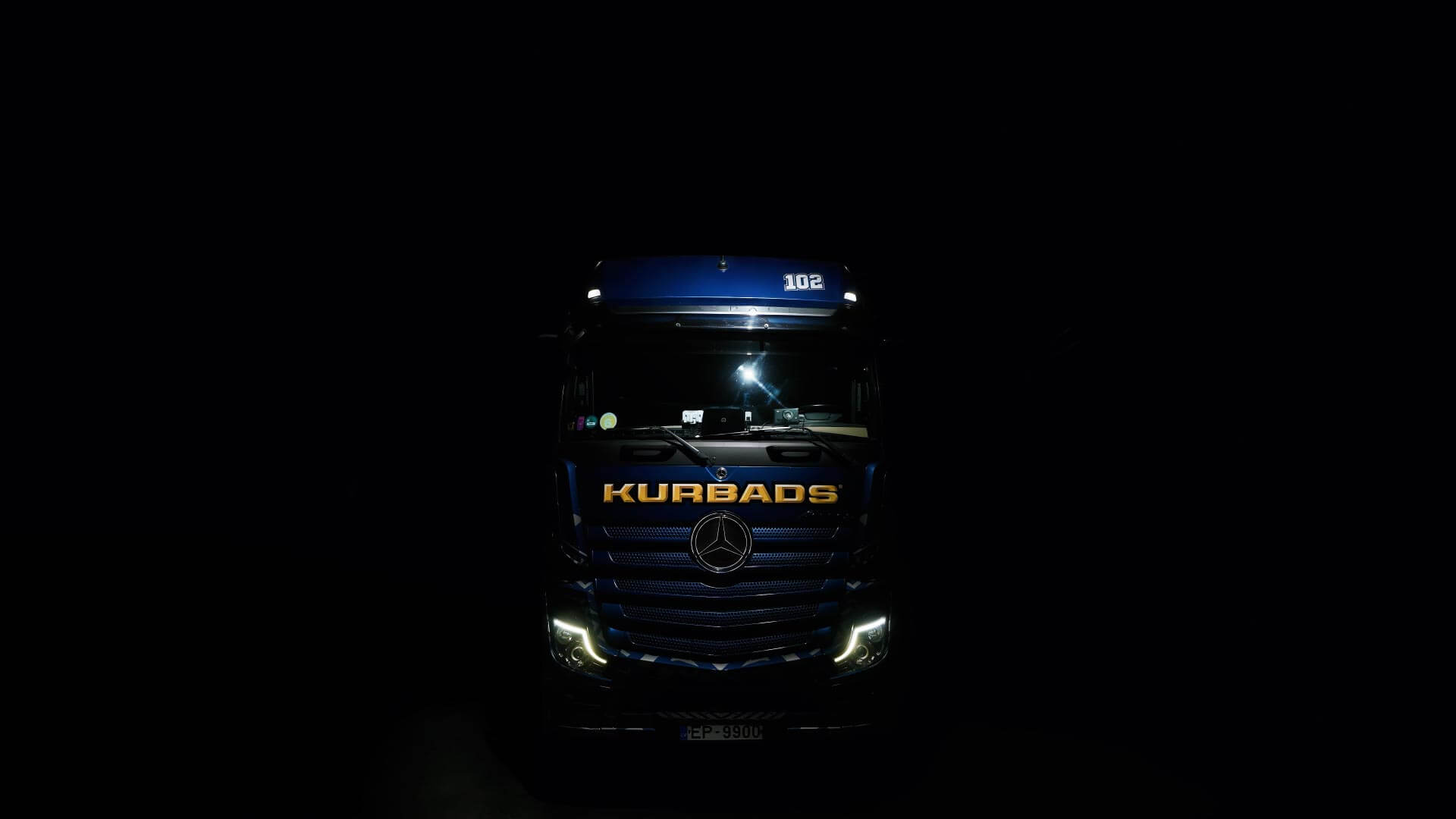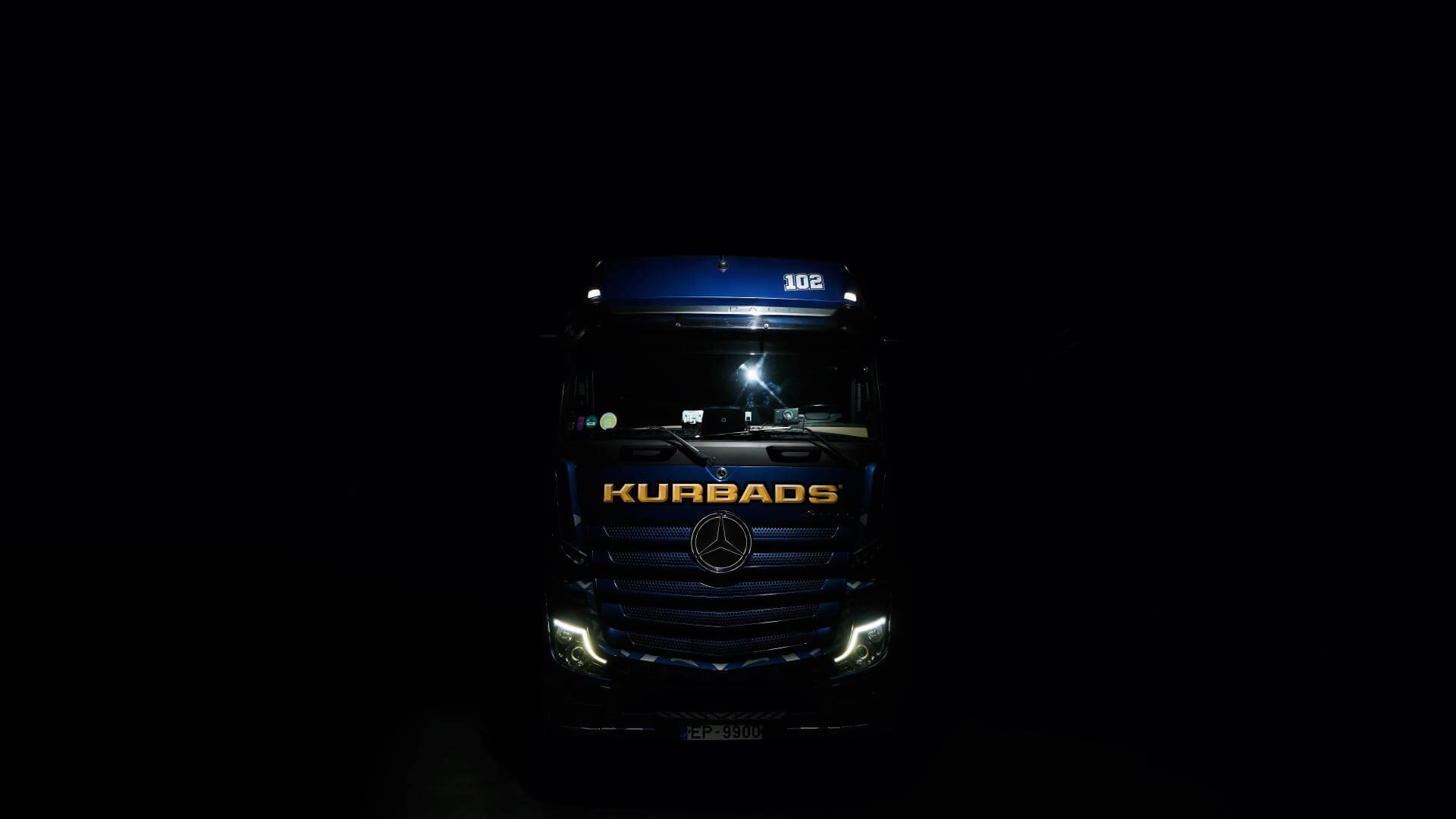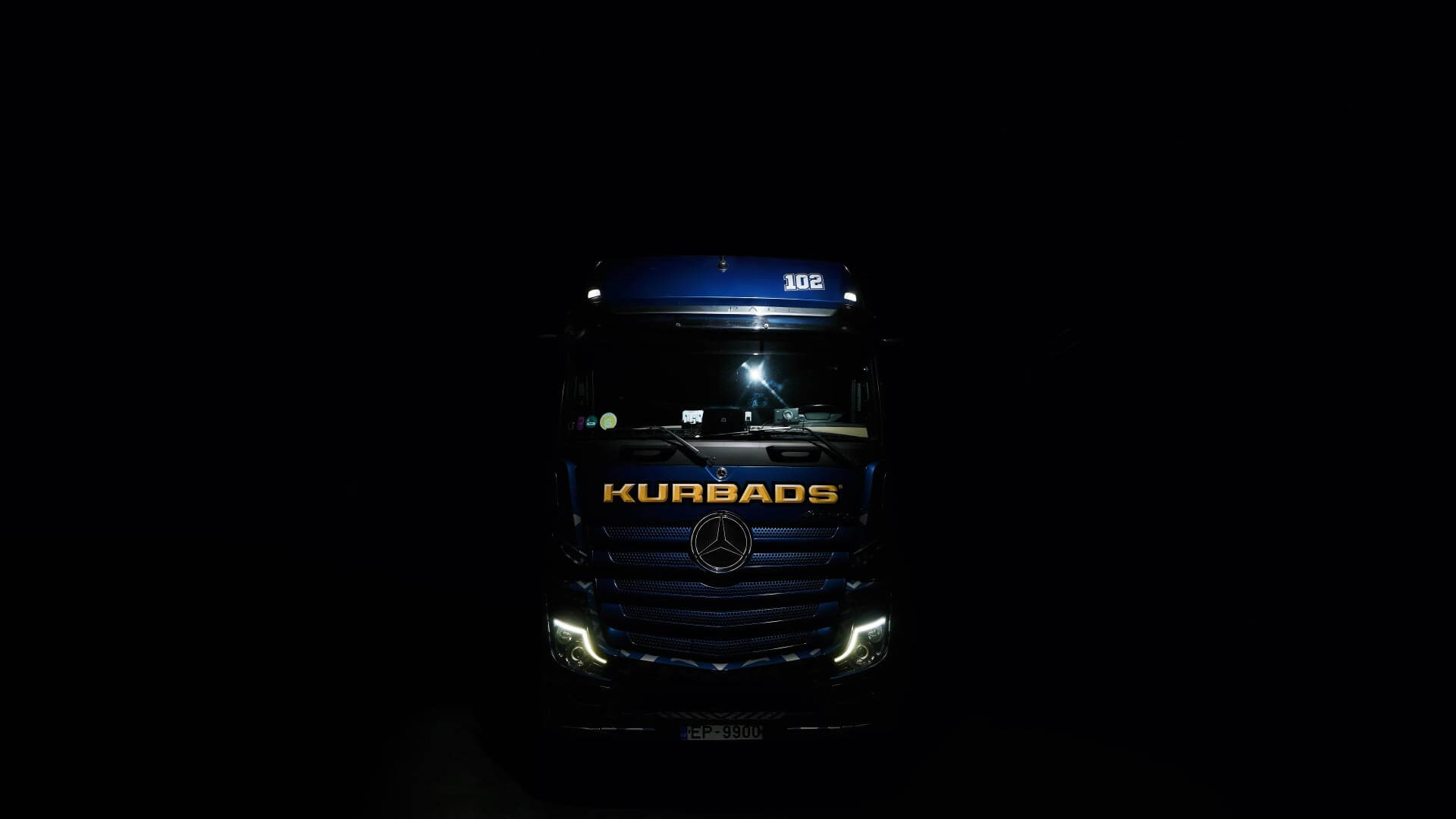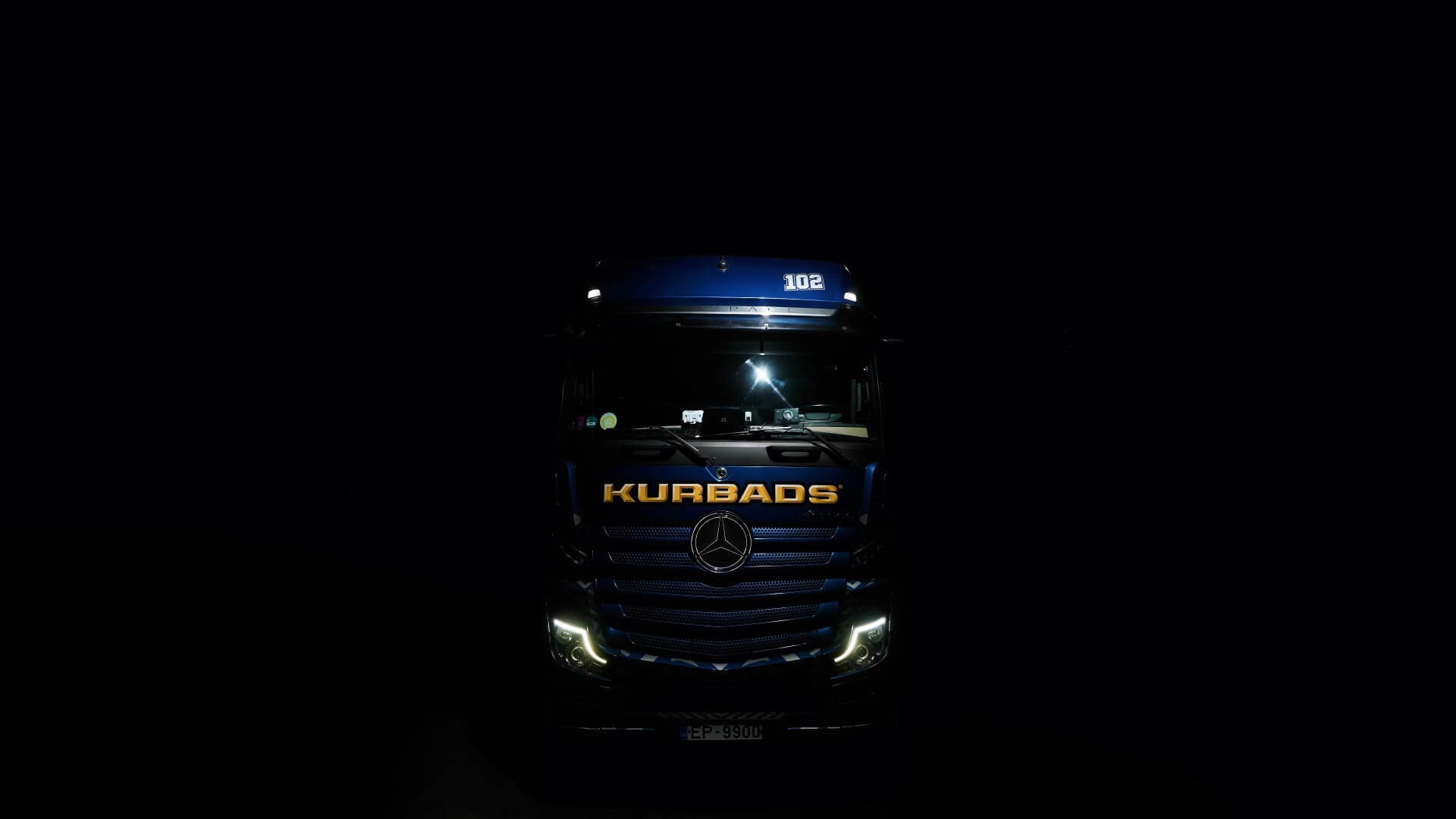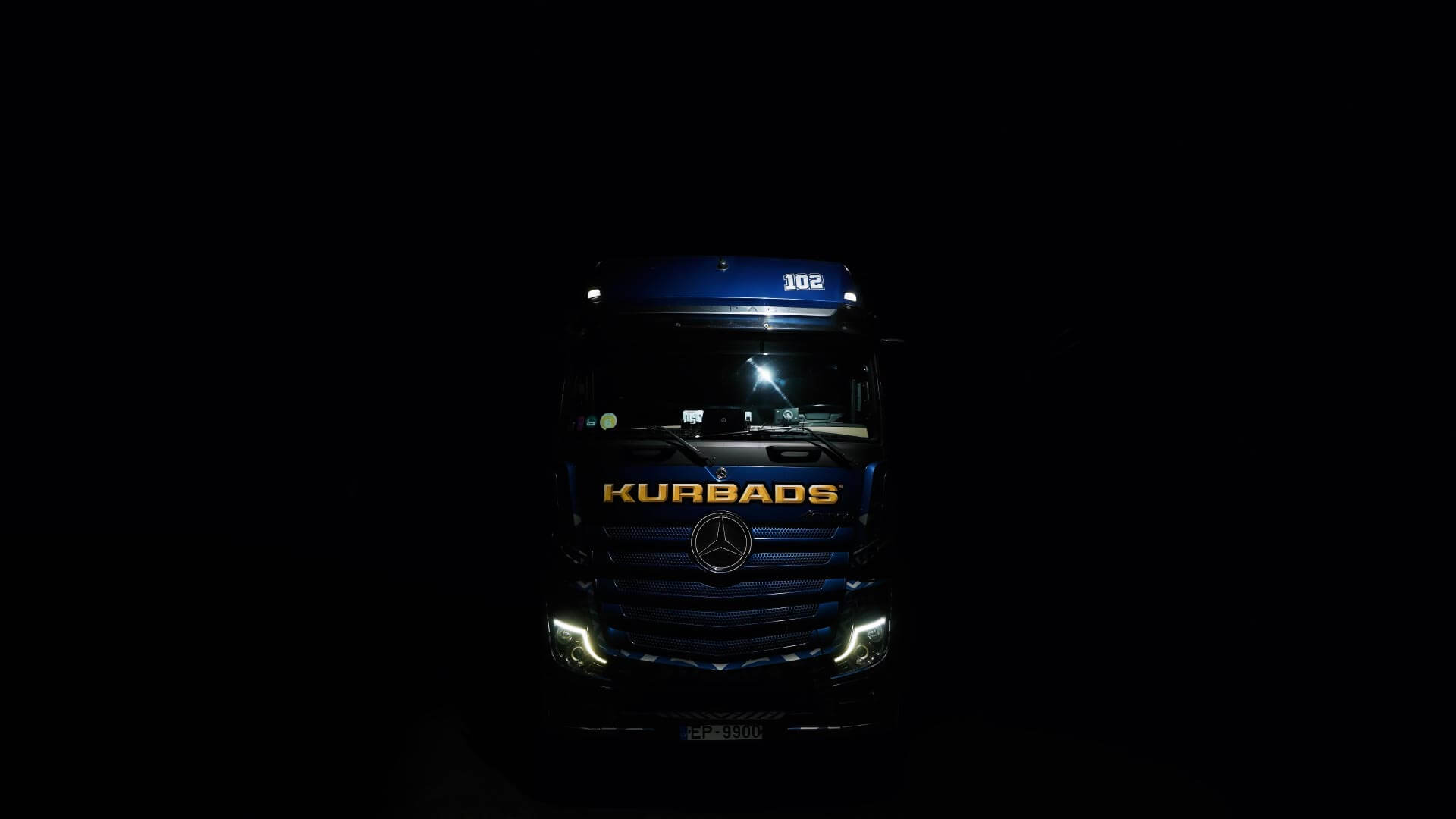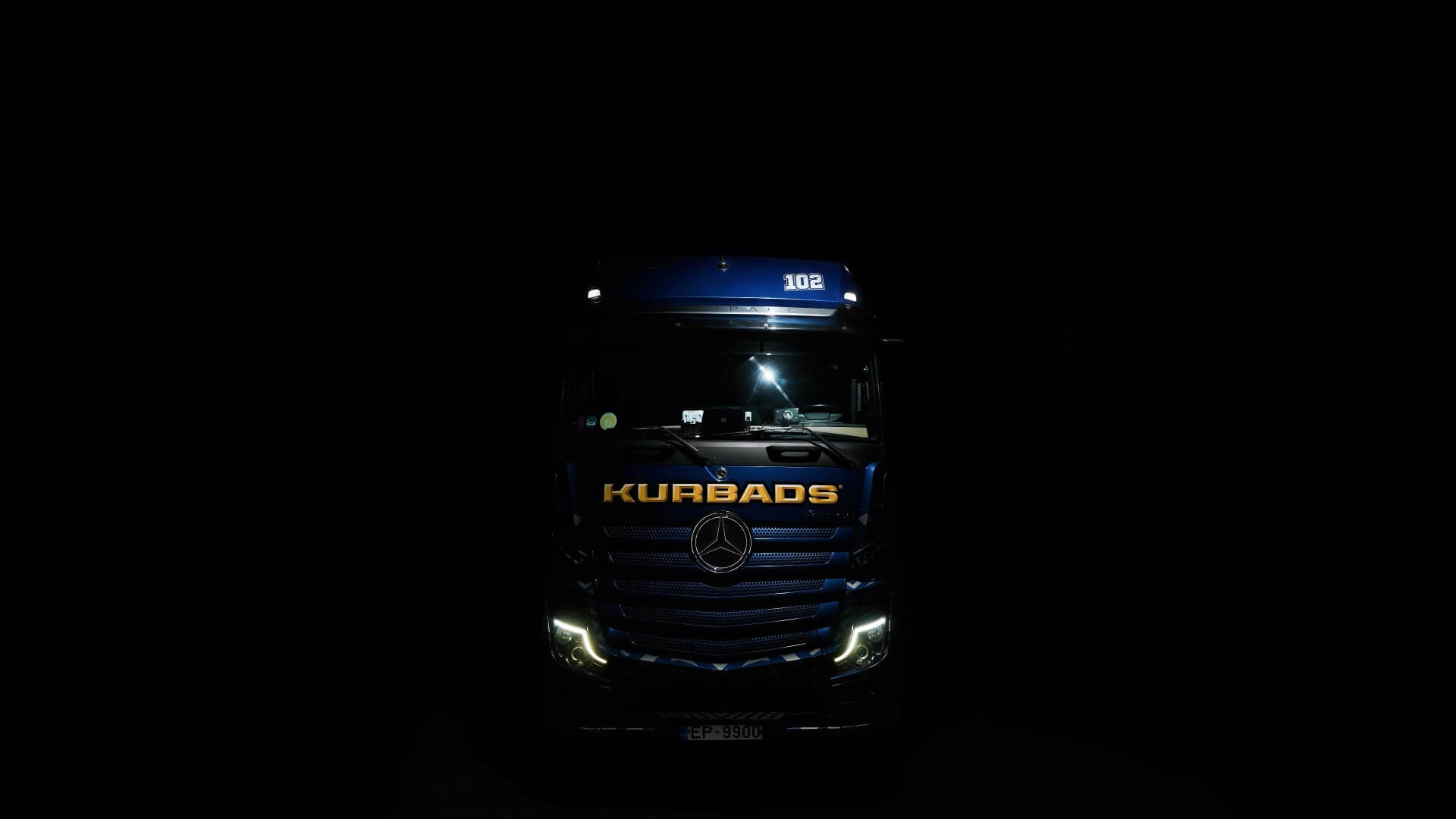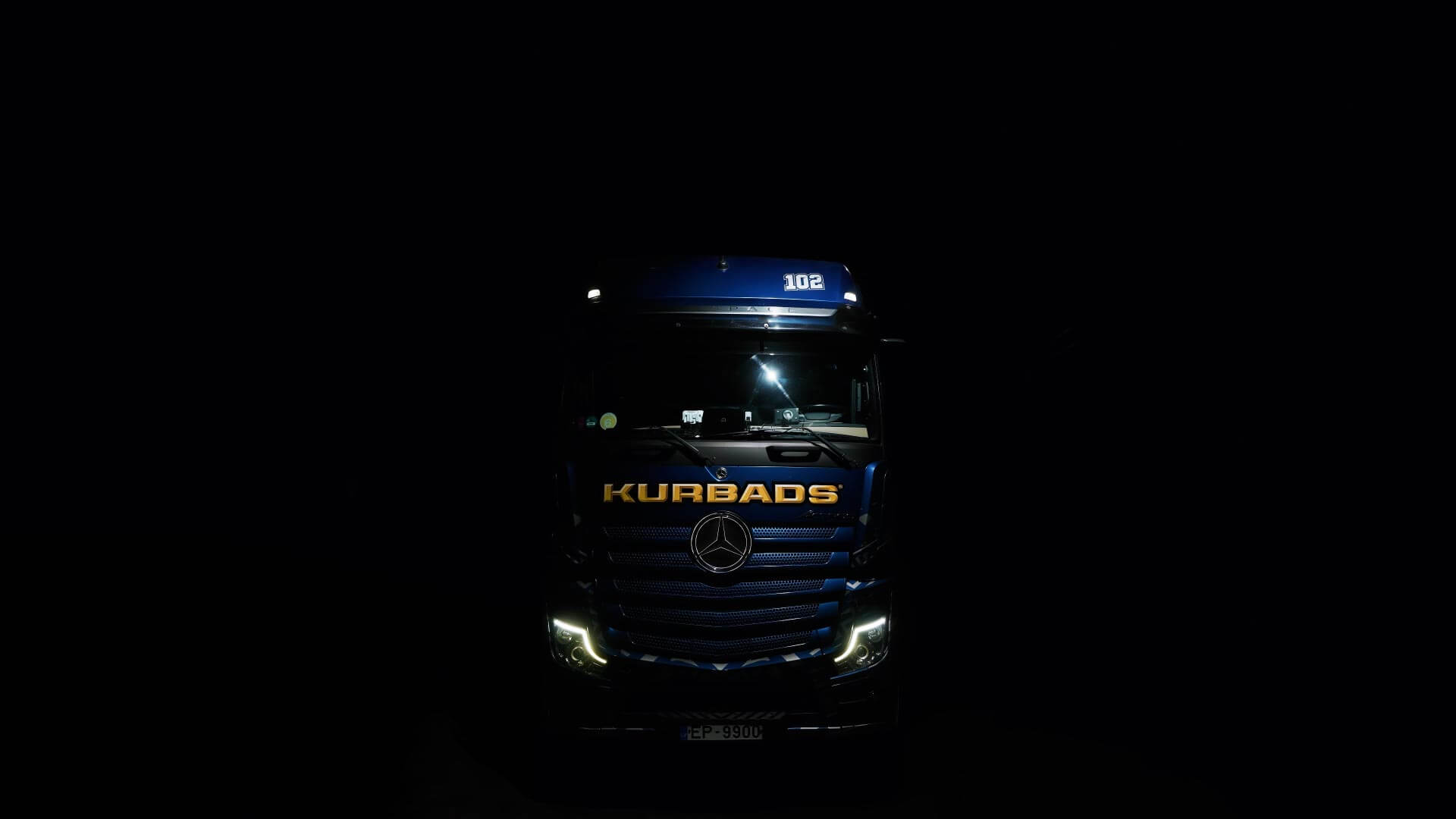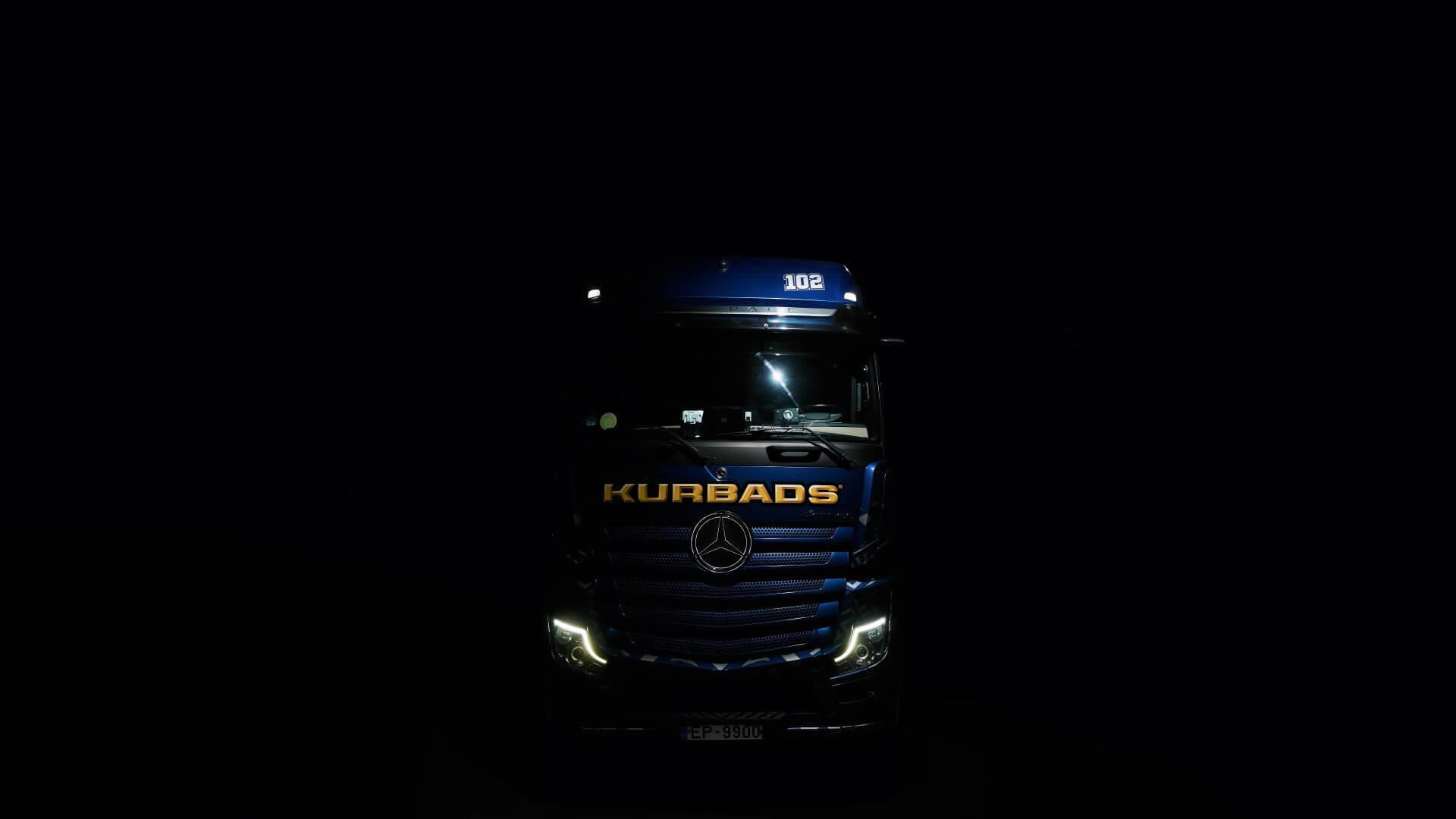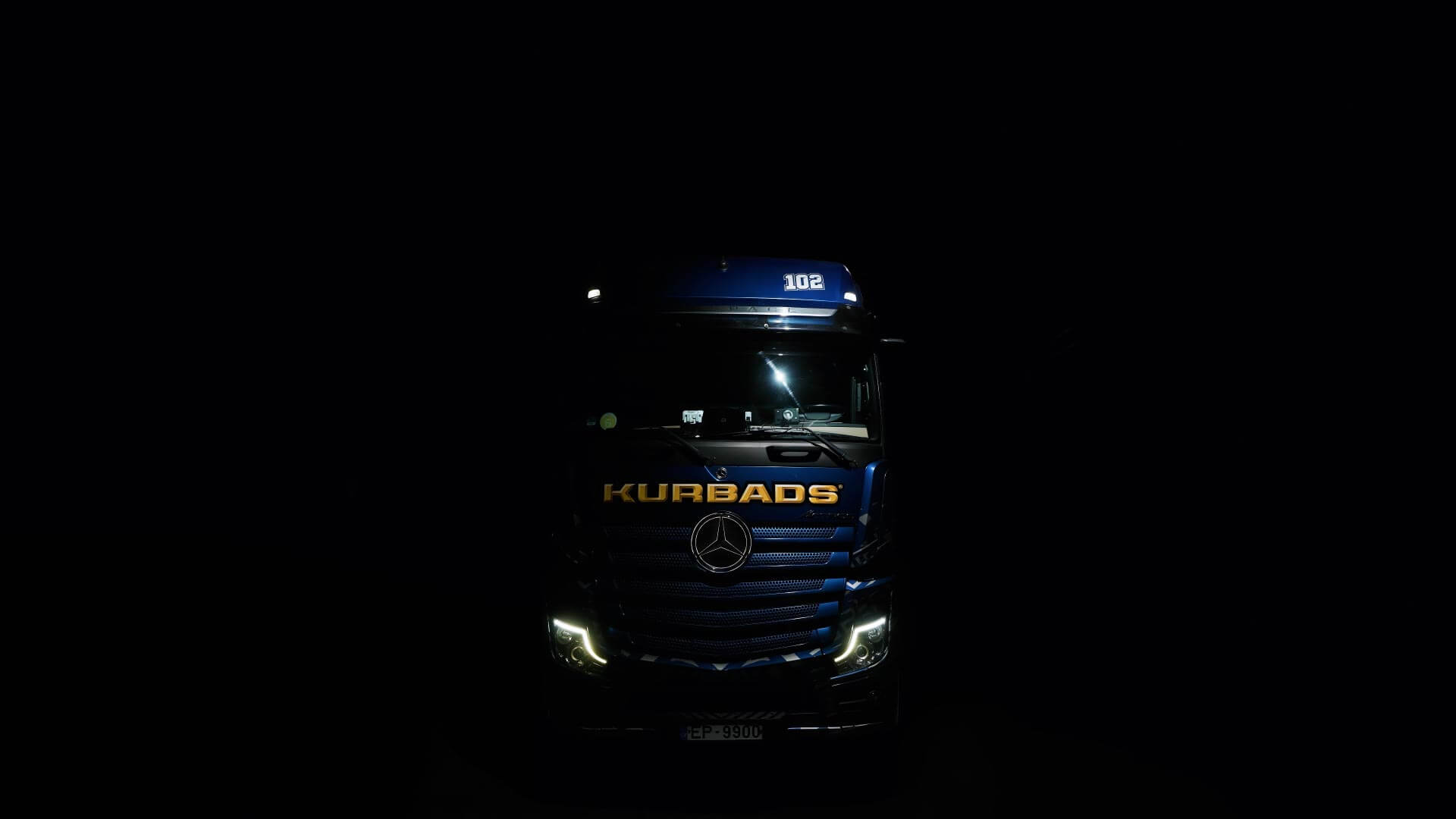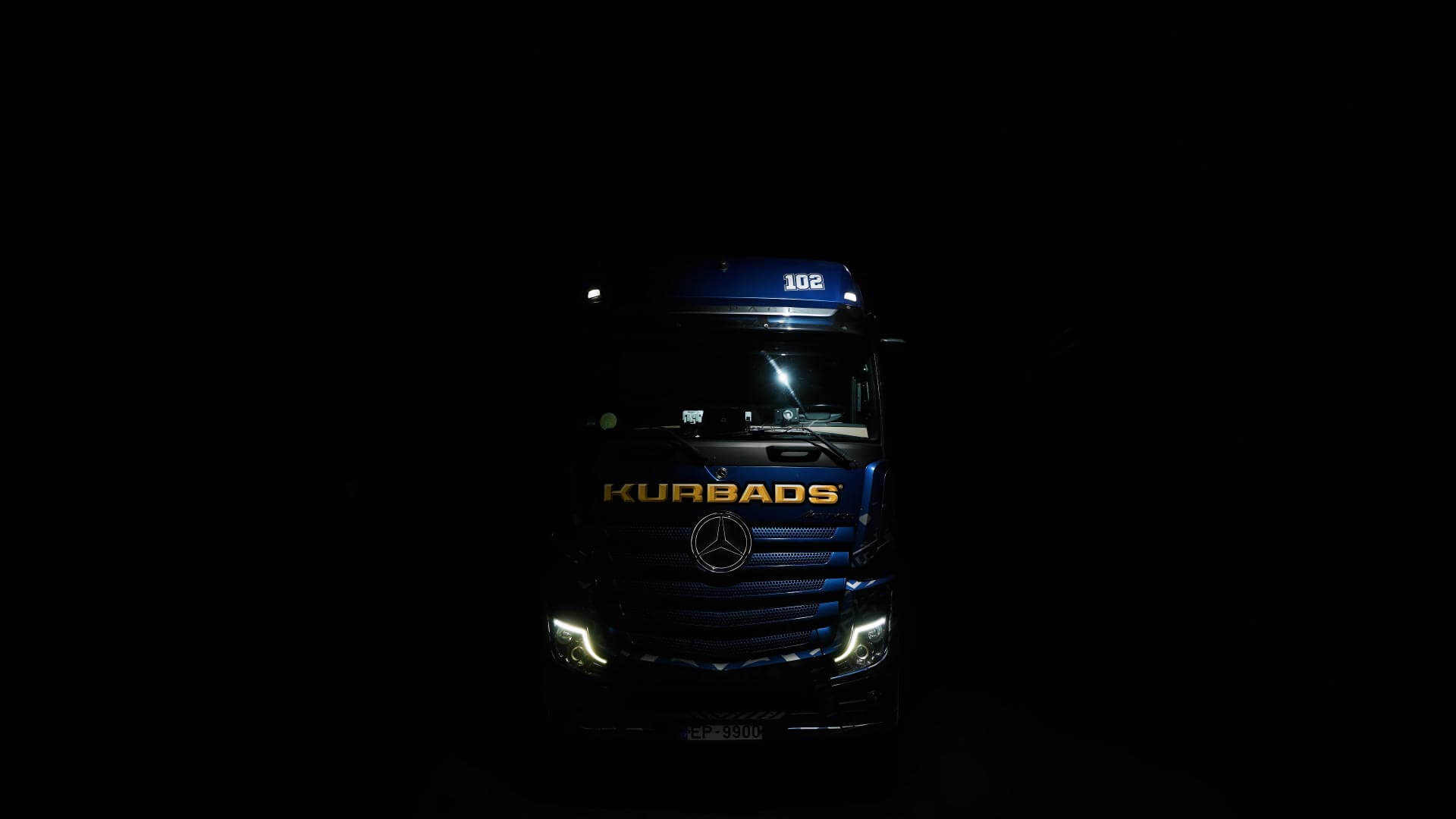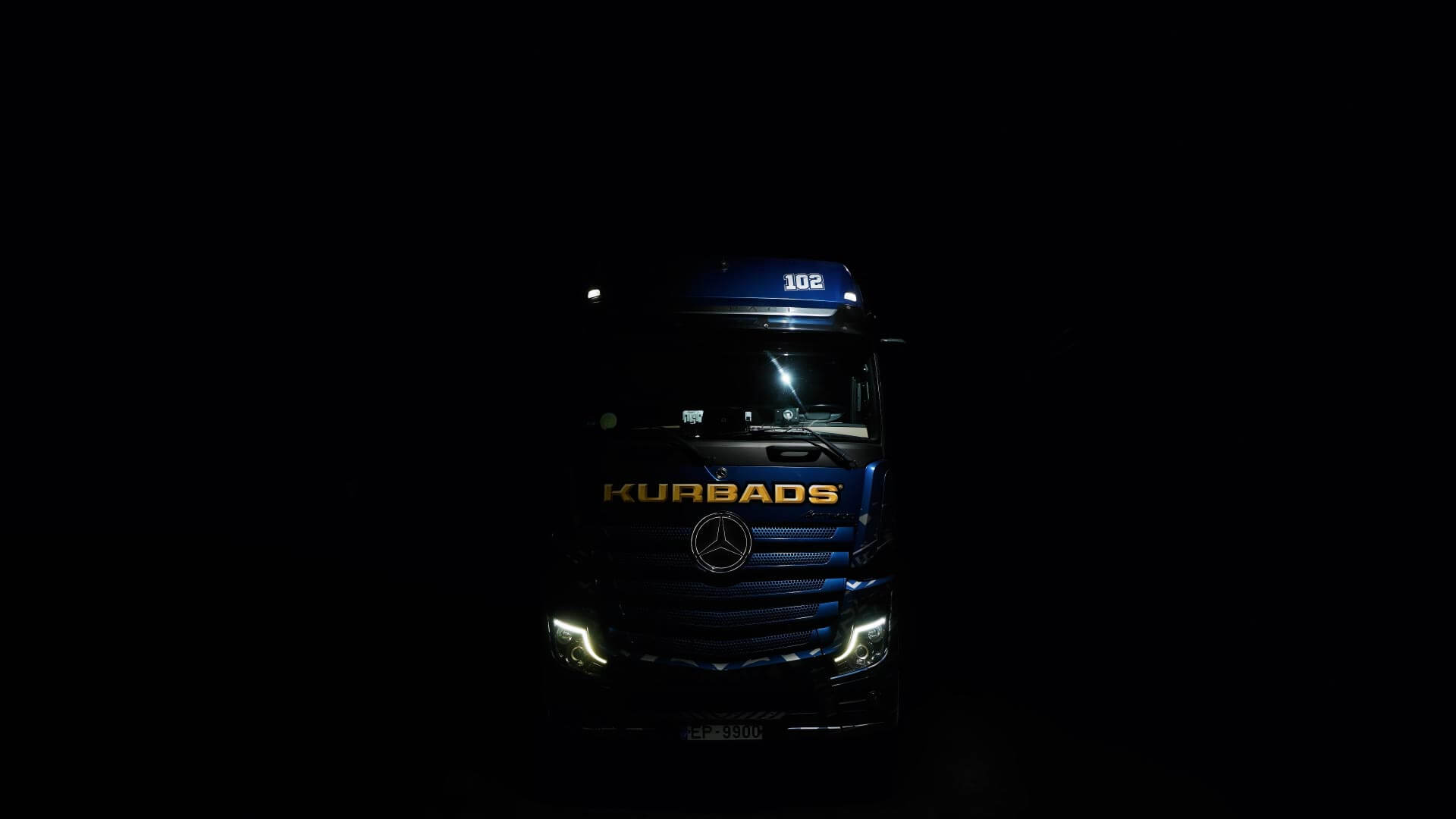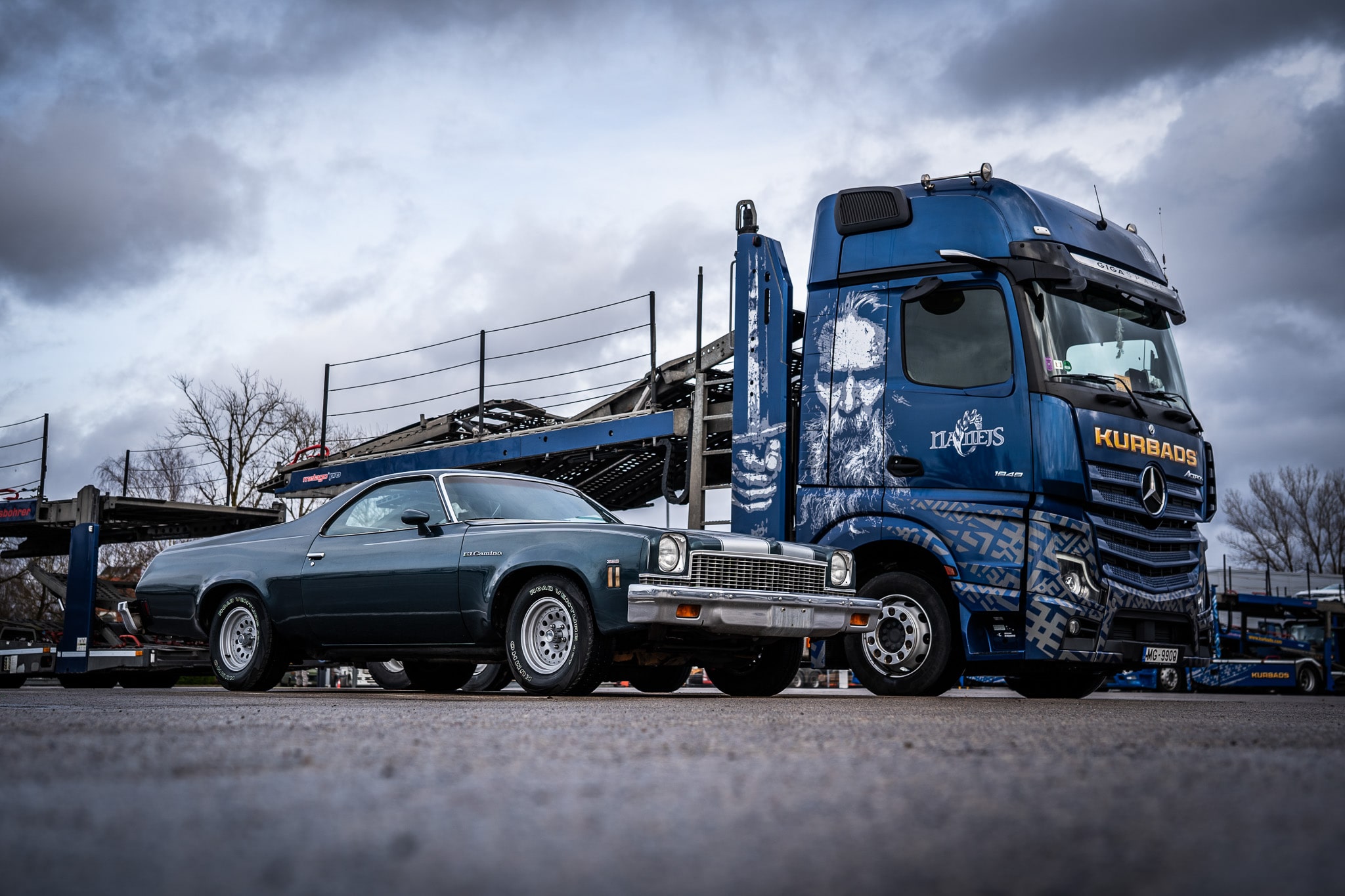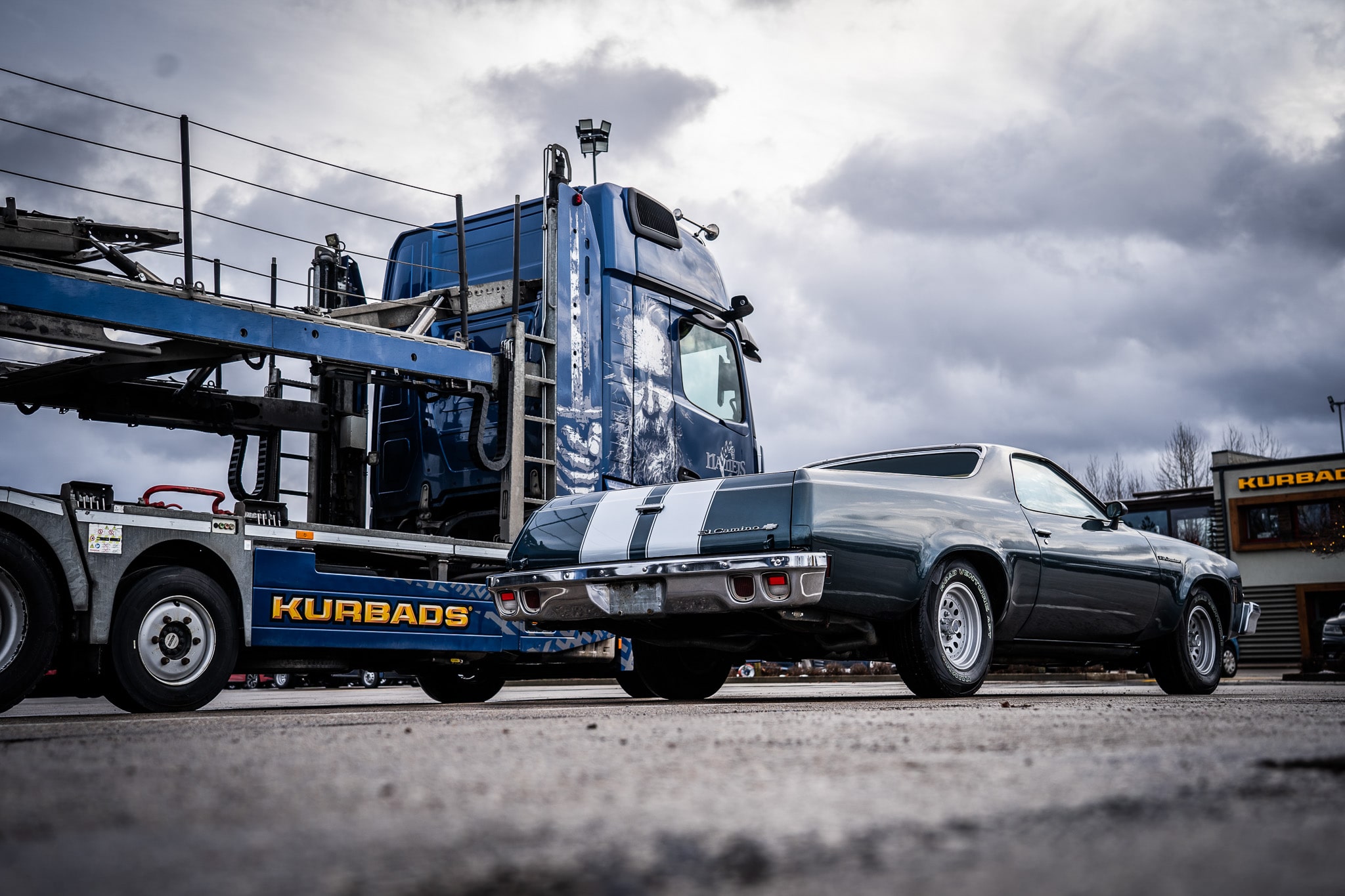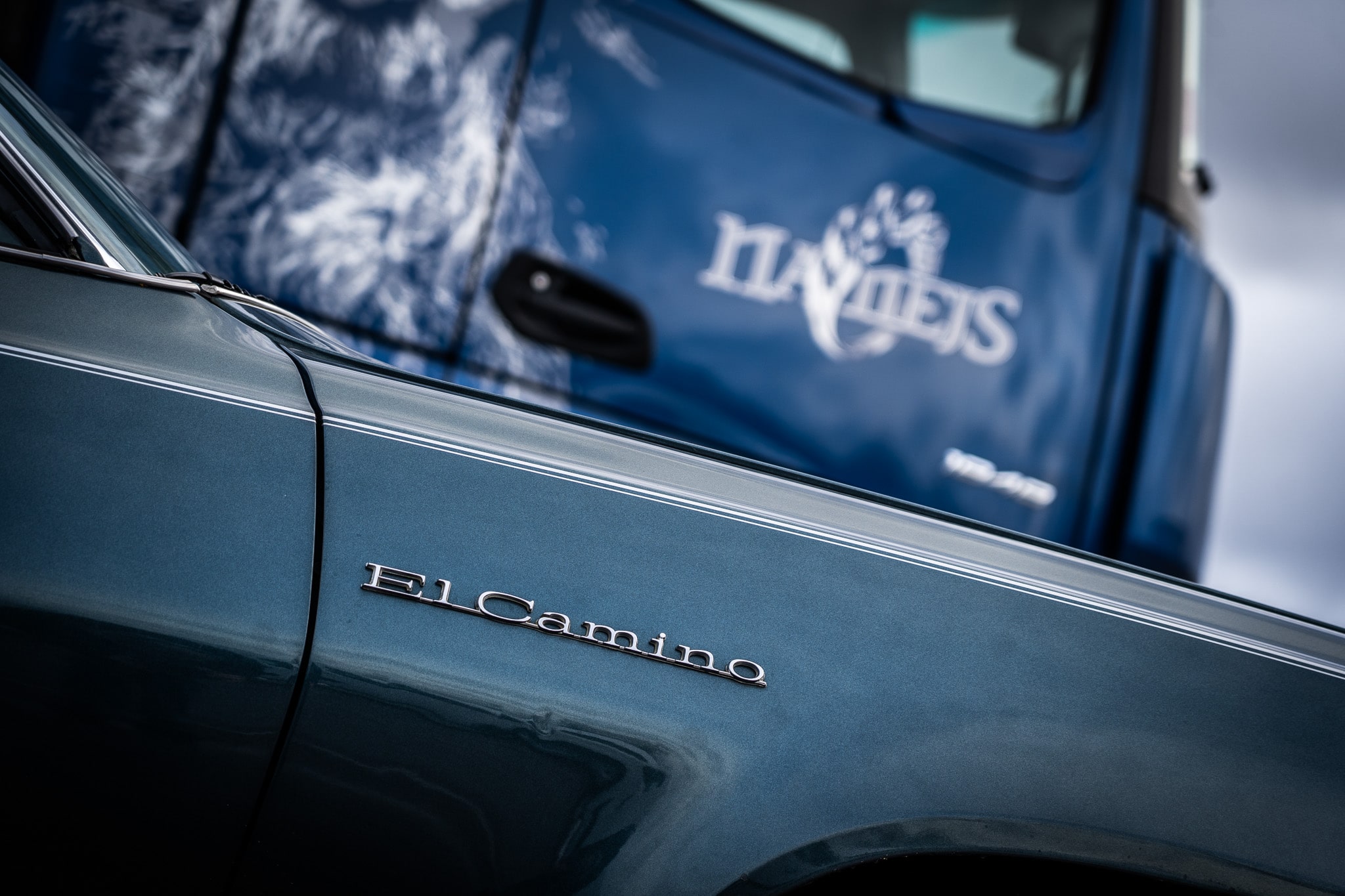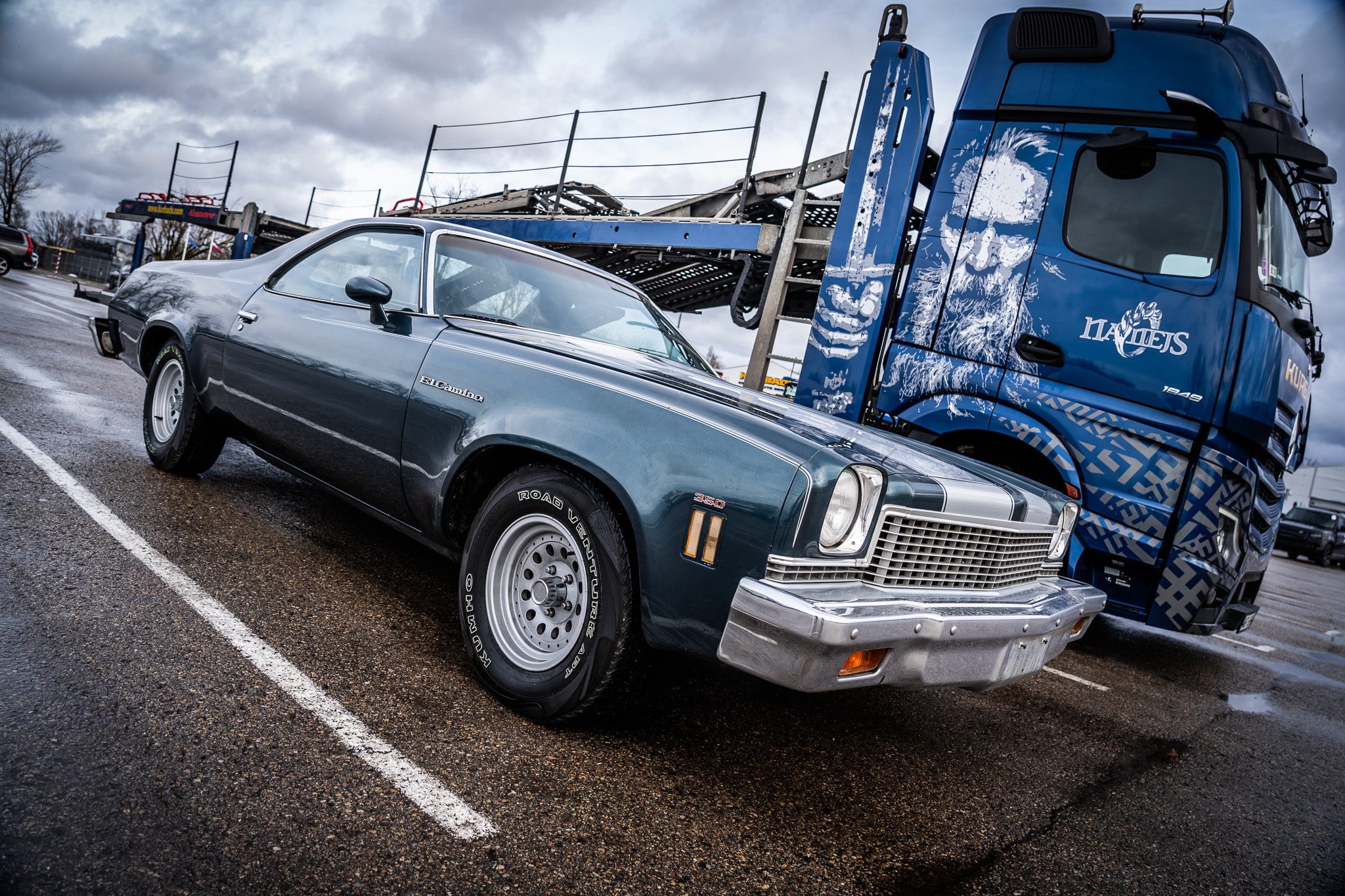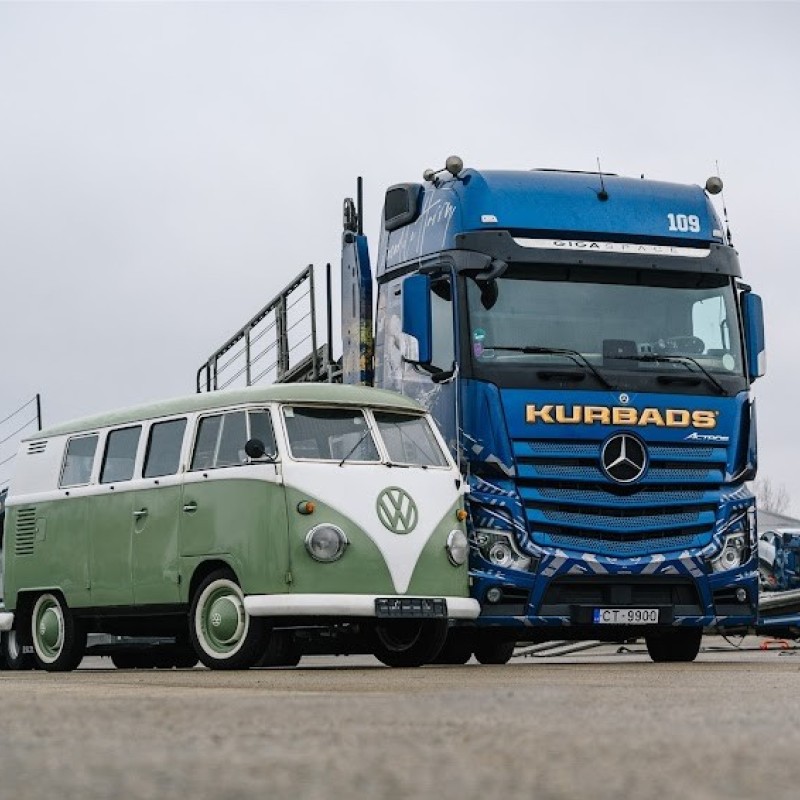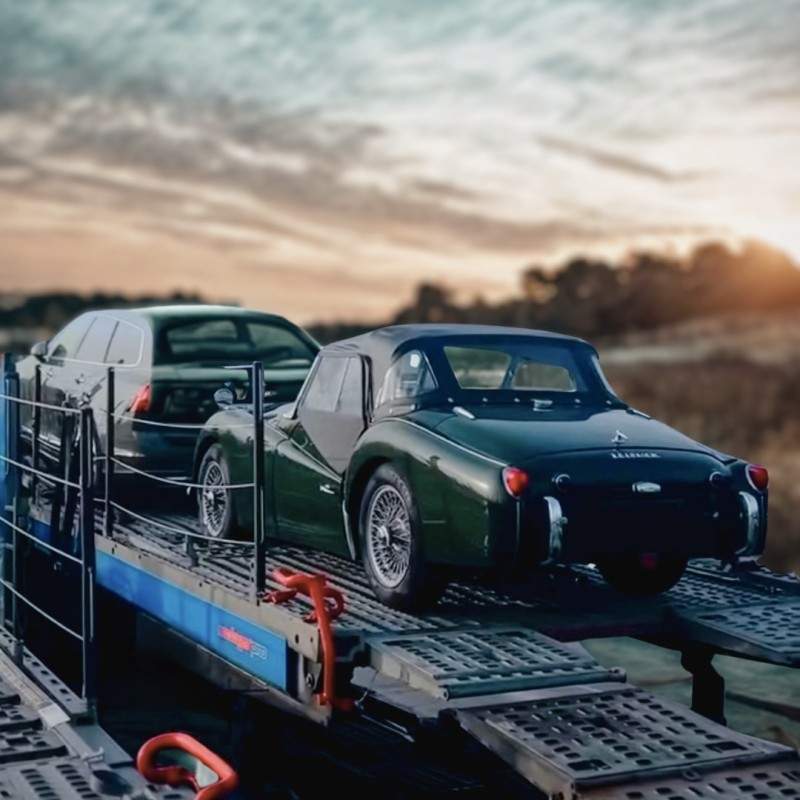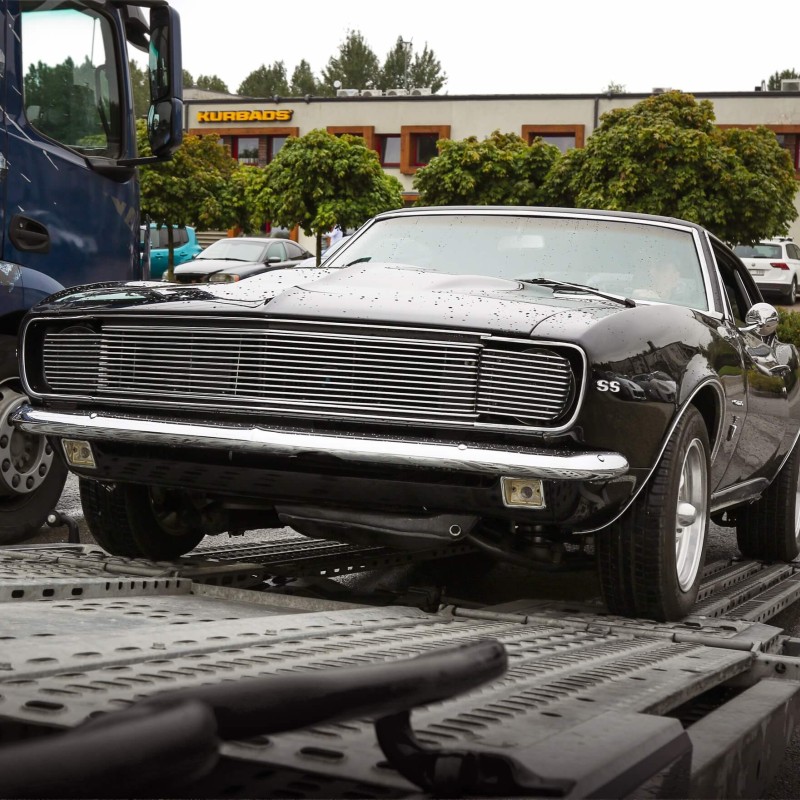At Kurbads base Chevrolet El Camino 1973

How General Motors’ sports pickup became the first muscle car with a cargo box, a representative icon of American automotive design.
Cargo vehicles of the car transport and logistics company Kurbads met their counterpart from the 1970’s. The Chevrolet El Camino has an eight-cylinder engine that can look good and do something useful.
“Raul!!!”
The epic scene from the dark comedy The Mexican is unforgettable! Brad Pitt’s rather flippant character goes to a Mexican car rental and refuses a brand-new Chrysler asking for ‘something more… Mexican?’ Following this conversation, Jerry gets the keys to a 30-year-old Chevrolet El Camino from the dodgy-looking men, complete with a huge V8 engine and all the trouble that the film’s dynamic plot pours onto the young man.
We should immediately point out the example in Kurbads’ collection is a distant, more recent relative of ‘that’ El Camino. The antique pistol Jerry was looking for, the accidental corpse of the gun’s seller, and a bloodhound of an unknown breed met in a third-generation 1969 El Camino, while here we have a fourth-generation pickup, born in 1973.
Between 1964 and 1987, the El Camino model went through four generations plus the very first one which had only survived for two seasons, in 1959 and 1960. Given that El Camino’s look often changed as frequently as once a year, it’s easy to become overwhelmed by the variety of designs and engines.
Not all variants were equally successful, but the long life of this Chevrolet vehicle is perfectly in line with its name, which translates from Spanish as ‘the way’.
Missing out on a debut
The American car industry has always been known for crazy ideas, impractical concepts, and for boldness and energy to bring them to the assembly line. In the 1960’s, General Motors’ styling department was under the management of the talented, if despotic, Harley Earl, and if he fell in love with something wild, convincing the management of the same was purely a technical task. They say that Earl had suggested the coupe pickup idea as early as 1952, but must have coincided with the wrong phase of the moon, or a bad mood at the board of directors.
GM slept epically through the invention of the ‘coupe utility’ vehicle, or ‘ute’, leaving the laurels of its creation to the far more conservative Ford. Americans had been pondering the idea of combining a car and a cargo vehicle since the 1920’s. According to legend, the final push came with a letter Ford’s management received from an Australian farmer’s wife – she asked for a car ‘that you drive to church in on Sunday, and take pigs to market in on Monday’. Ford Ranchero came out in 1957, two years before El Camino.
Chevrolet El Camino 1973 in Kurbads base
No frame, no tonne
From a modern perspective, the idea of a lightweight two-seater pickup truck doesn’t sound that crazy, let alone an idea that’s worth millions. But in the late 1950’s, many were surprised by the plan to build a pickup, primarily a utility vehicle, using a station wagon as the base, with its load-bearing unit body, rather than the conventional pickup frame.
In fairness, at least at the beginning, the box capacity of Ranchero and El Camino was laughably low, mostly around a few hundred kilograms. It was not something you could use to bring fuel to a logger or a combine harvester.
Nevertheless, the vehicle you see in the pictures next to Kurbads’ ‘Namejs’ is by no means a weakling. Thanks to the double walls and floor of the cargo box, as well as levelling pneumatic shock absorbers, which have been an El Camino’s feature since forever, also known as ‘air shocks’, at the rear, the car could take 1250 pounds, or about 570 kilos. Not bad!
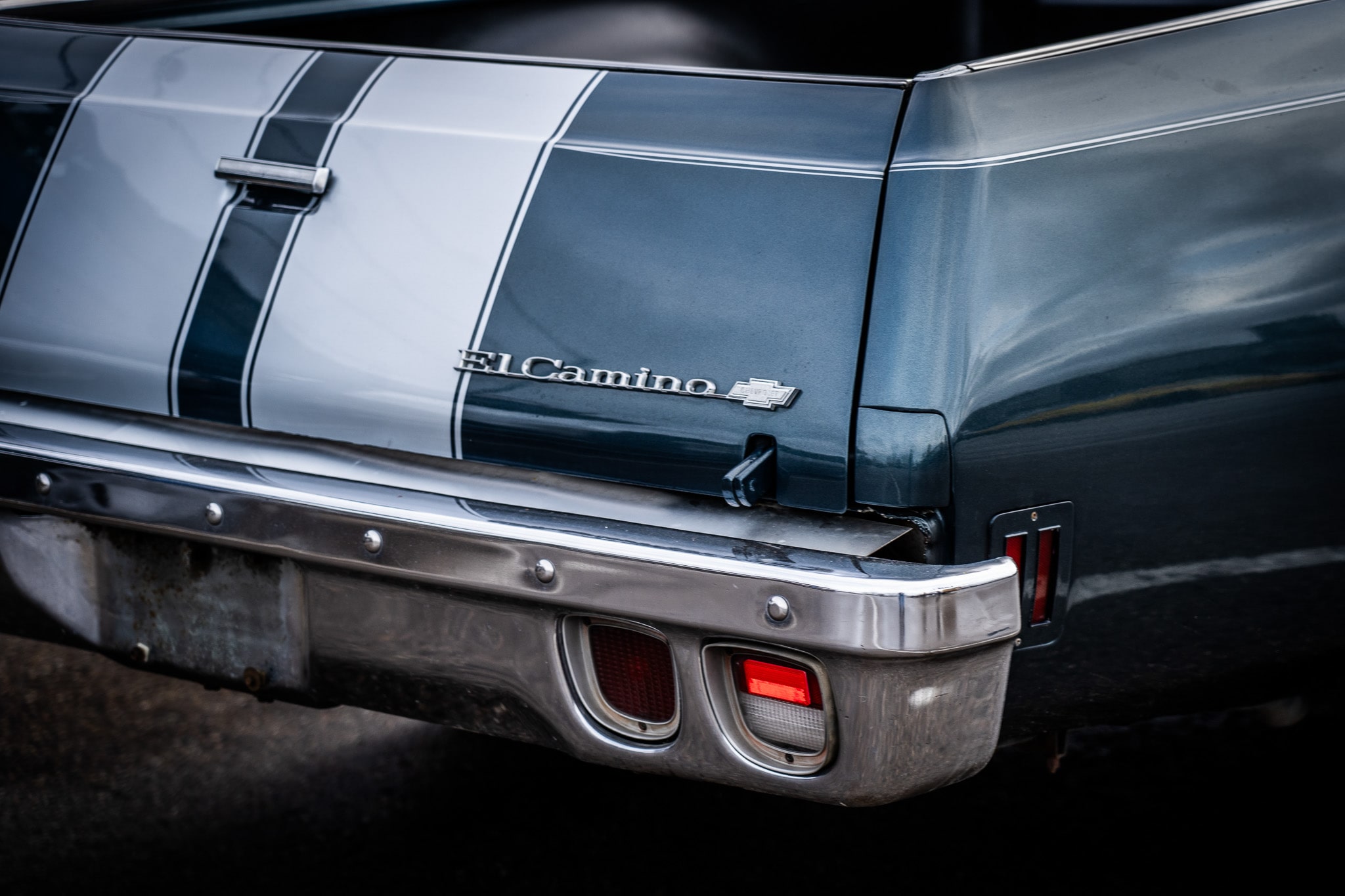
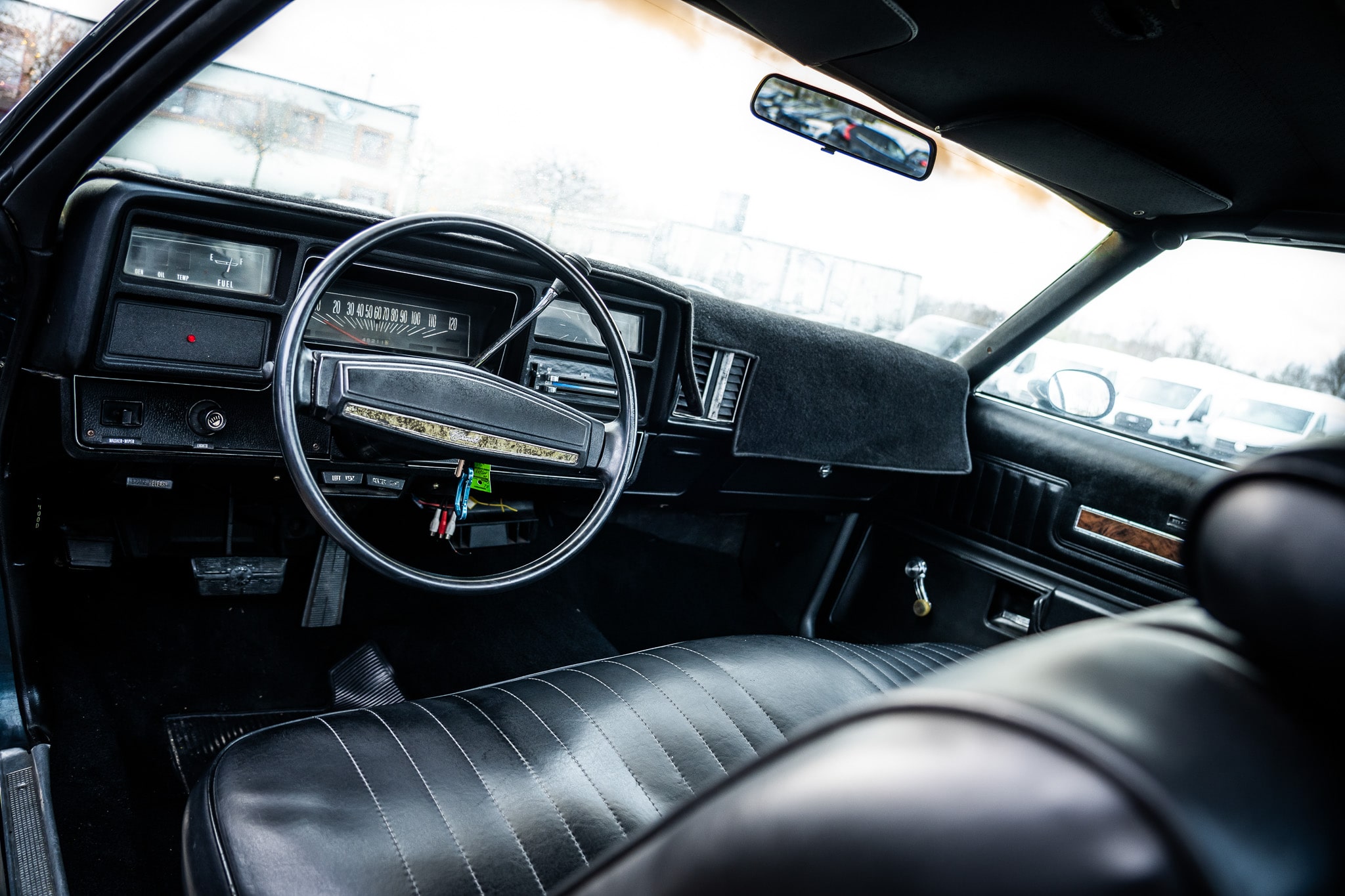
As you open the door, you can see the Fisher Body logo on the sideboard. For 70 years, this company made bodies for a wide range of General Motors vehicles. Although General Motors took over the business of the Fisher brothers completely in 1926, out of respect for these energetic local industrialists, the tycoons of old Detroit allowed the Fisher Body logo to show up on Chevrolets, Oldsmobiles, and Cadillacs until as late as 1984, when the ‘blue carriage’ metal presses were shut down for good. Actually, the logo survived for a little longer.
World’s fastest pumpkin
And so Earl’s dream coupe pickup was born, with the mistakes of the first generation neatly corrected and the product’s appealing features deftly communicated to the buyers. But how did El Camino go from a practical everyday car to a cult vehicle with two wide stripes on the bonnet?
The answer is simple: power. Chevrolet originally marketed El Camino as a municipal vehicle with low-power six-cylinder engines, offering the option of equipping it with Chevrolet small-block V8 engines with about 200 horsepower. In theory, since El Camino was based on the mid-range Chevrolet Chevelle, it had access to larger GM engines.
The horsepower breakthrough began in the late 1960’s with the introduction of Super Sport sub-models, which all had the big-block V8 engine. The feast of motor power reached its peak in the early 1970’s. The sports pickup had at the time the biggest and most powerful 7.4-litre Chevrolet engine, with 450 horsepower, which meant that the pumpkins in the cargo box soon realised that they could fly a quarter of a mile in less than 13 seconds.
On a straight road, El Camino could go as fast as 171 km/h, and don’t forget, the heyday of high-power pickups was still far ahead. Although the 1973 oil crisis and the subsequent revision of the power standard erased the most powerful V8s and Corvette levels of horsepower from El Camino’s catalogues, the car had already earned a reputation as the world’s first muscle pickup.
Ironically, it was Ford this time, the pioneer of this class, that missed out on its chance, as it brought large engines to its Ranchero later than Chevrolet. A 7.5-litre or 460 cubic-inch engine only showed up in the ‘rancher’ in the mid-1970’s, with the beginning of a massive switch to unleaded petrol, denying the legendary ‘big blocks’ their erstwhile epic power due to lower compression rates. El Camino’s 7.4-litre V8, too, had only 245 horsepower in 1975. Despite this, it was the third generation El Camino that turned out to be the most popular one, with 250,000 cars sold in five years.
Character in the background
Our El Camino was born right at the dividing line between the ‘good old days’ and the era of stricter exhaust emissions rules and even stricter passenger safety requirements. The fourth-generation pickup is the biggest and safest El Camino of all time, with additional door skid rods, frameless side windows, improved sound insulation, and catalytic converters which were installed on all engines. Some of the engines were absolutely sickly, with the smallest six-cylinder unit producing just 105 horsepower and the once mighty 7.4-litre blockbuster cranking up to 215 horsepower – meagre by new standards.
‘350’ on the front wing shows that this El Camino is equipped with the most popular 350 cubic-inch or 5.7-litre V8 (175 horsepower), while the proudly erect lever at the steering wheel signals that we have here the only available three-speed Turbo-Hydramatic automatic gearbox. This El Camino turned out to be sluggish because the choice of stuff under the bonnet had reached the low point in the career of Chevrolet pickups and, frankly speaking, there wasn’t much left of the coupe itself in terms of the design.
Its film appearances didn’t do well either. In The Bodyguard, Kevin Costner drives a 1982 El Camino, that is, the fifth and final generation of the model. Kill Bill 2? No, it has the 1979 version. In Breaking Bad perhaps? Also no, it’s a 1981 El Camino. But there is another way to look at all of this. Despite the rocky patch, Chevrolet El Camino outlived its main rival, Ford Ranchero, by a full eight years, and even managed to make a brief mid-1980’s revival in Mexico, where it was built until the end of the model’s career. The car shown in the pictures is effectively the first crossover of its time, designed and built when this term had not even been invented.




































